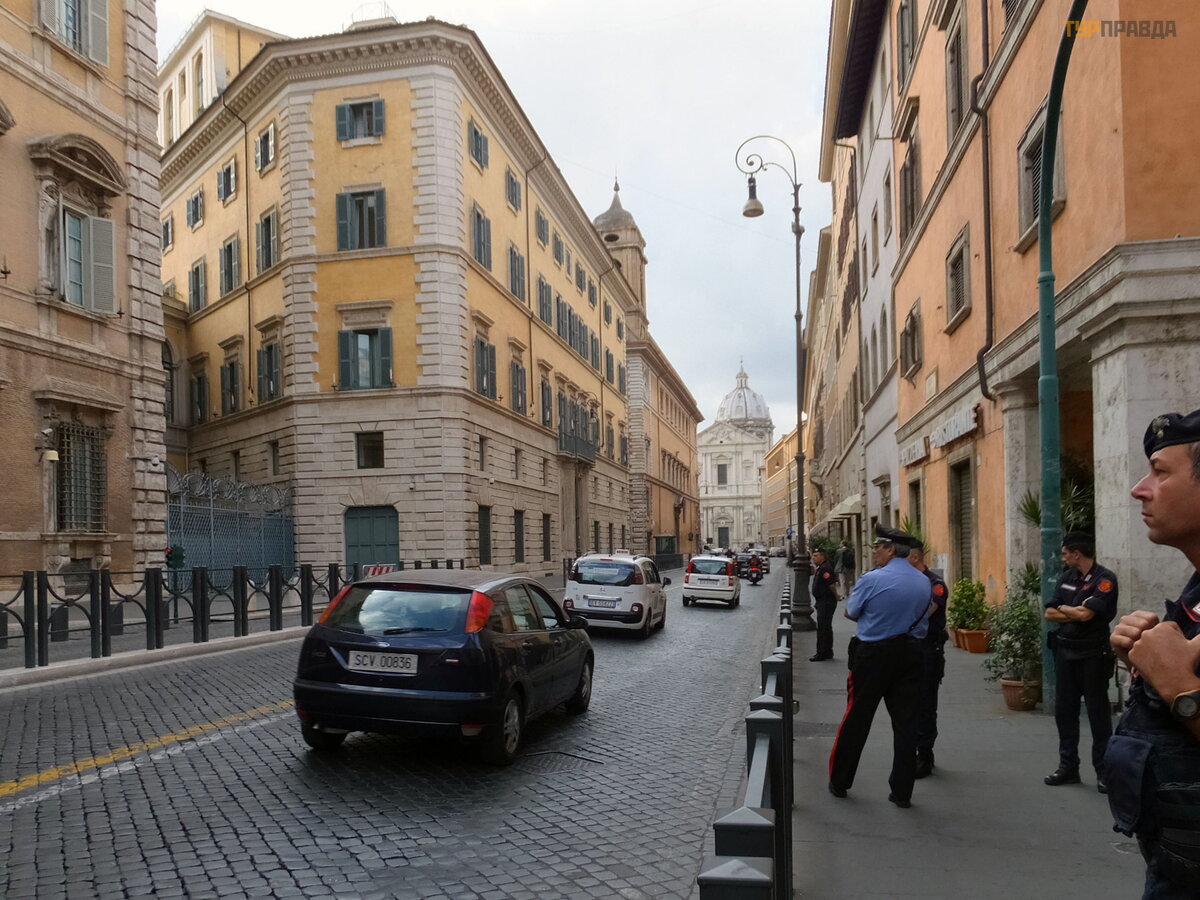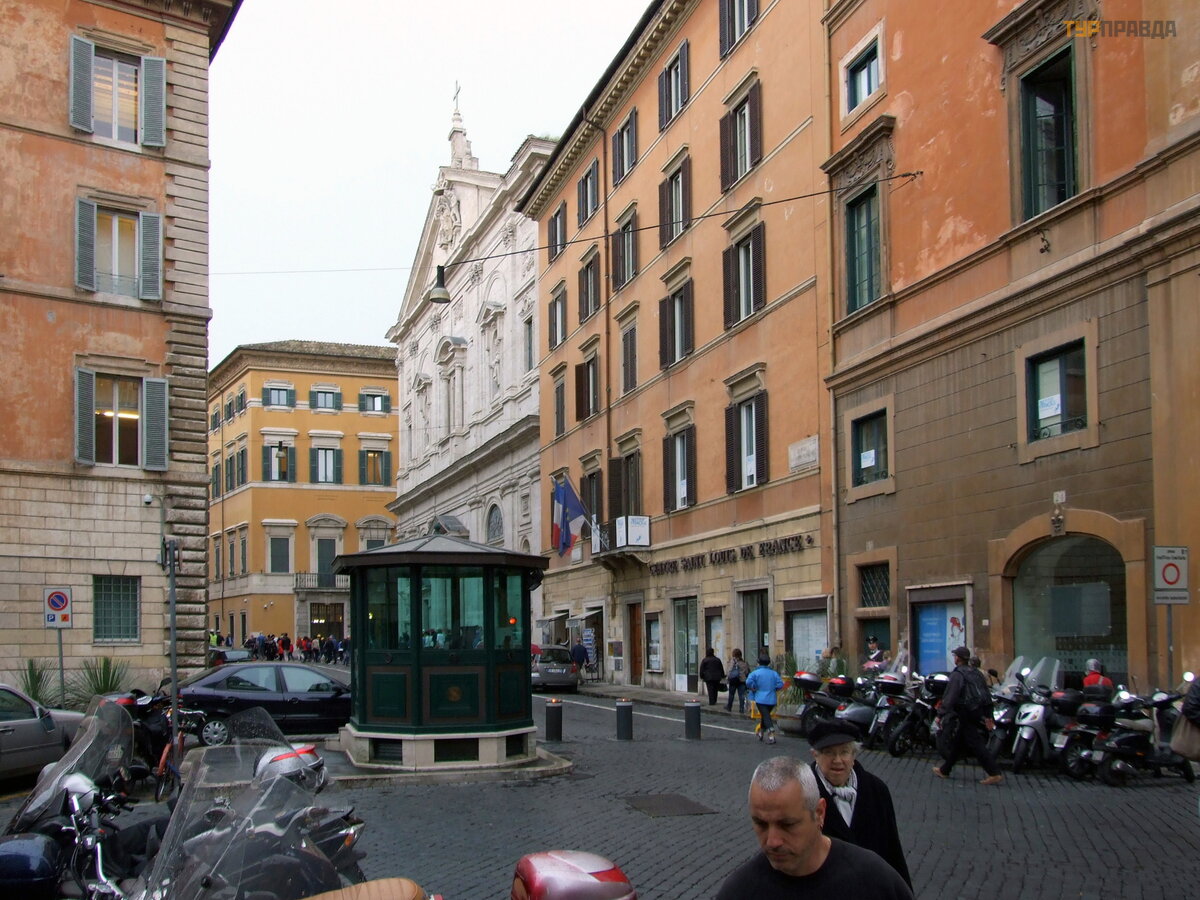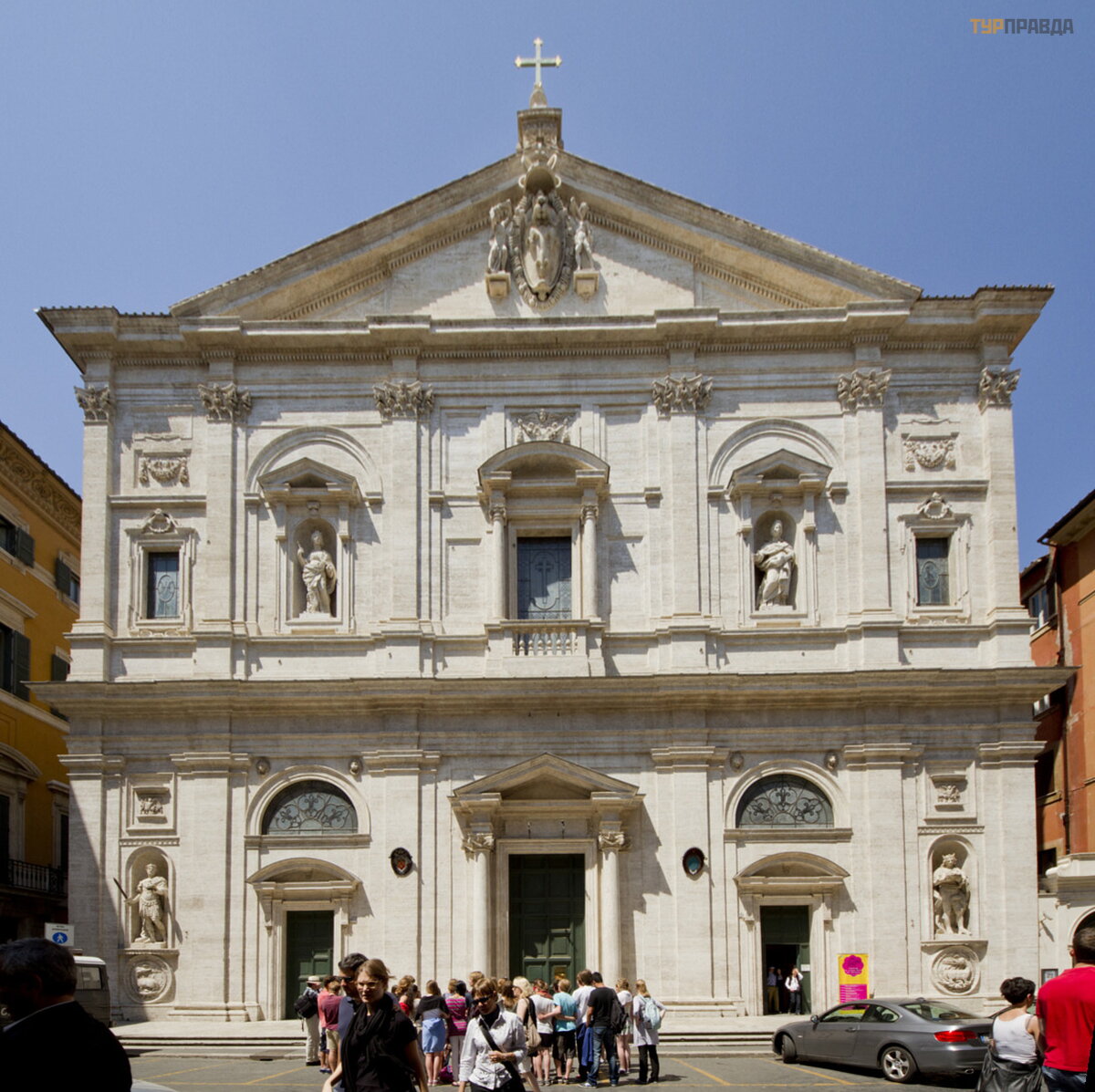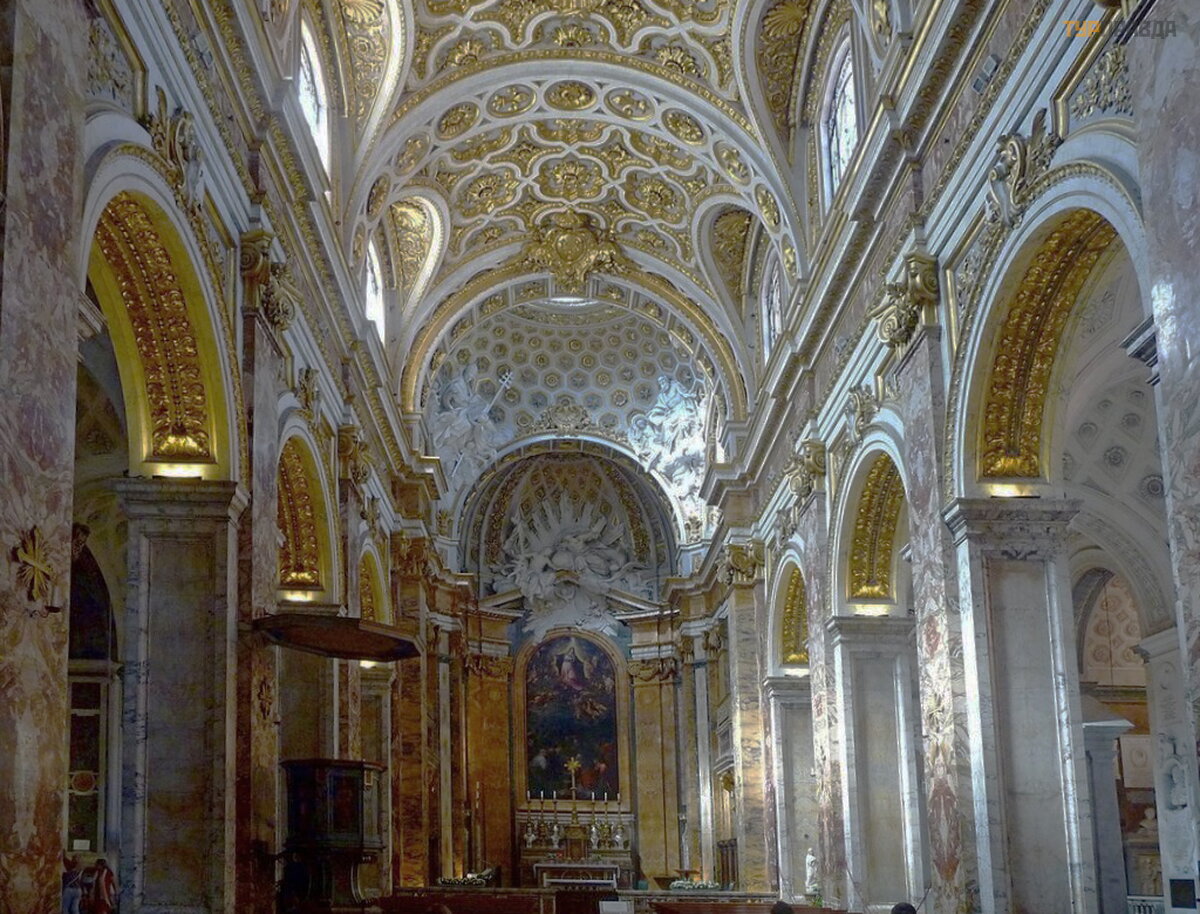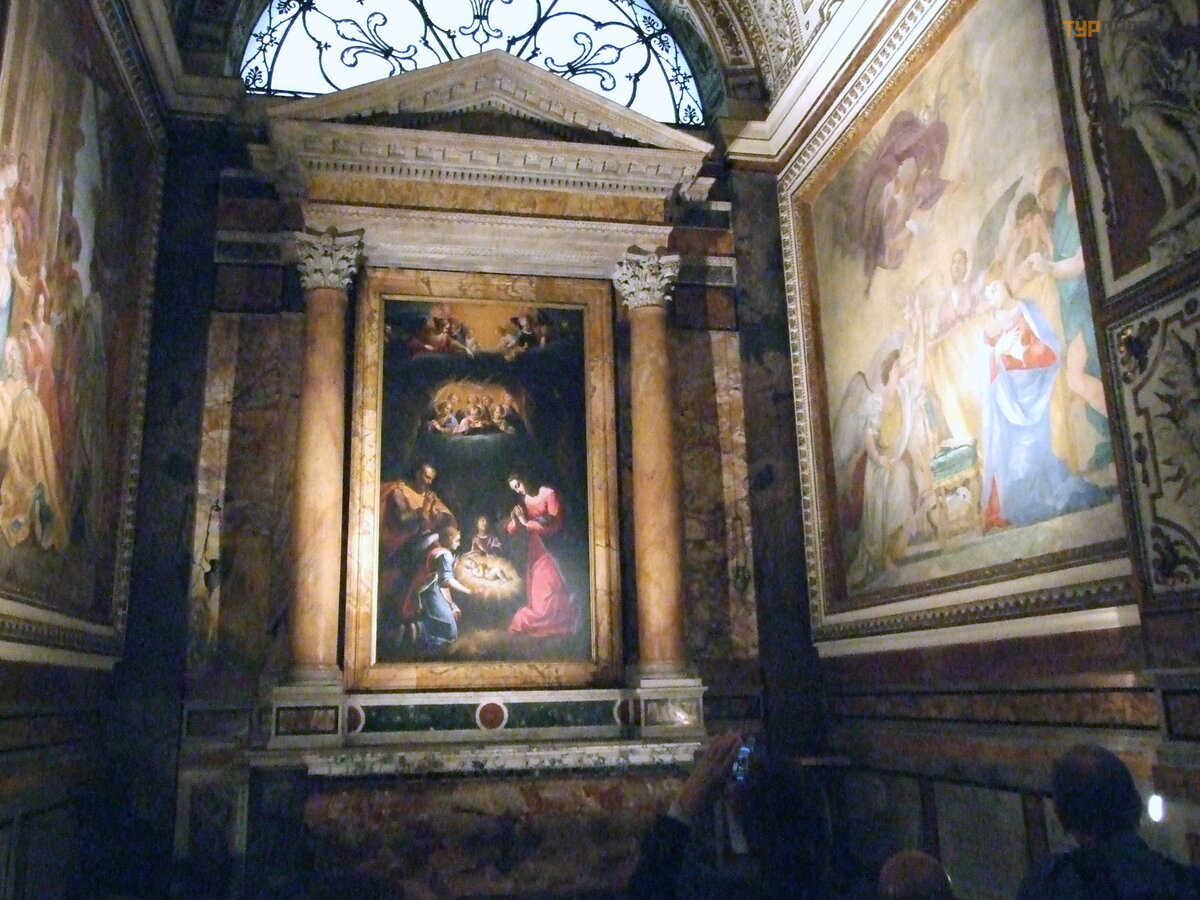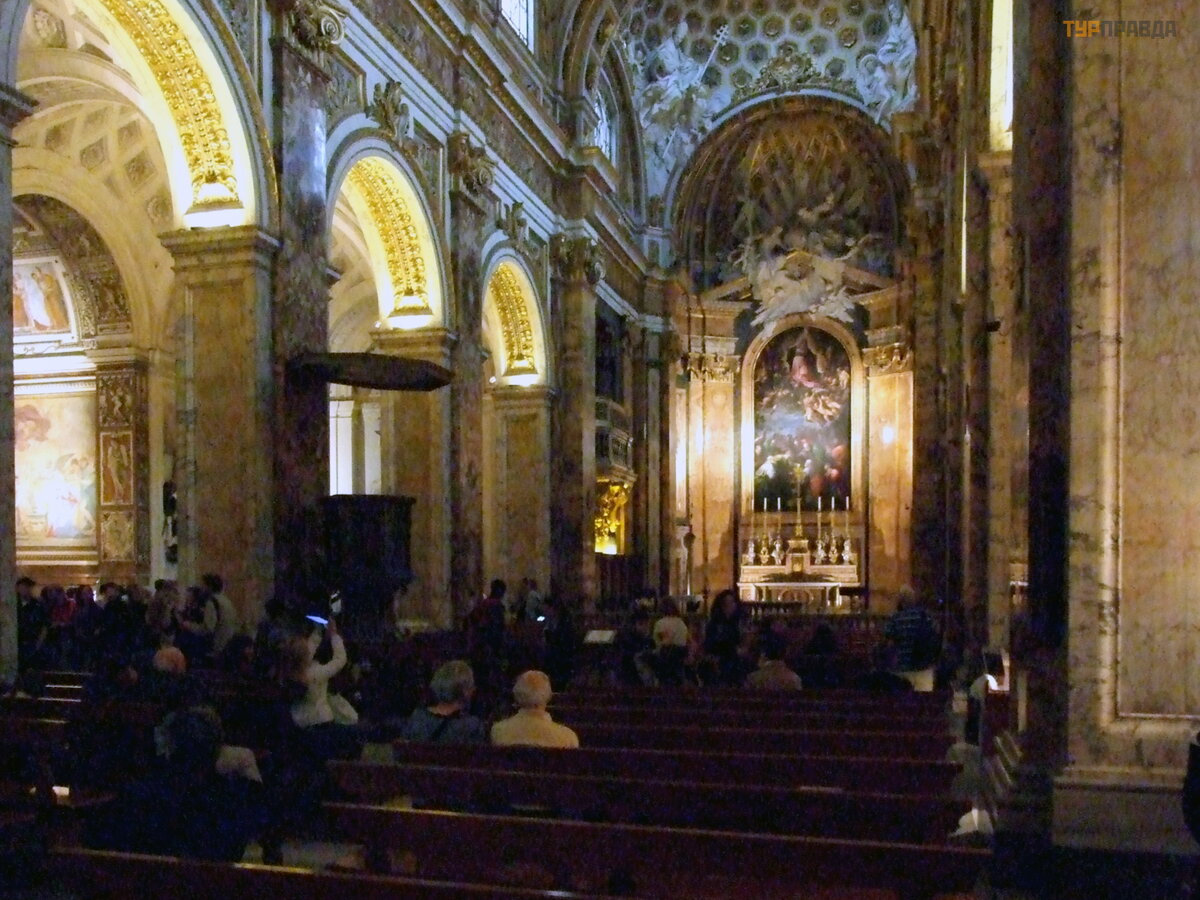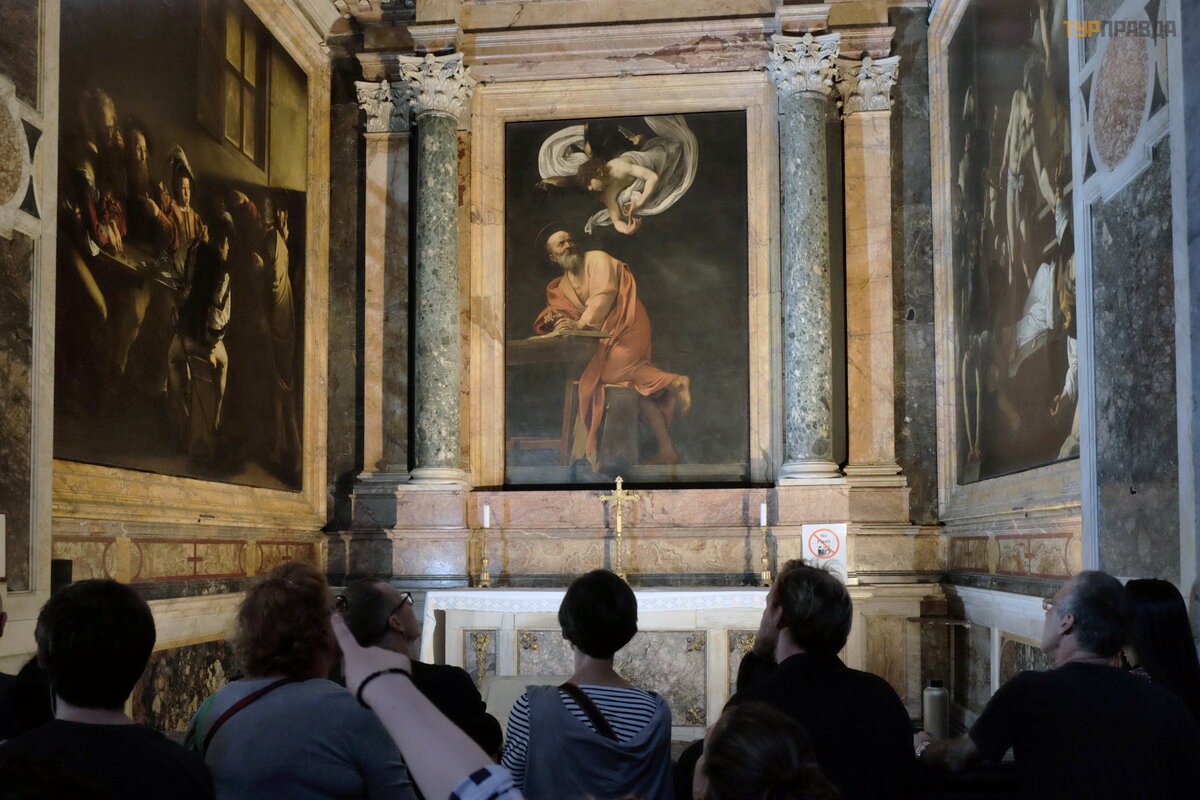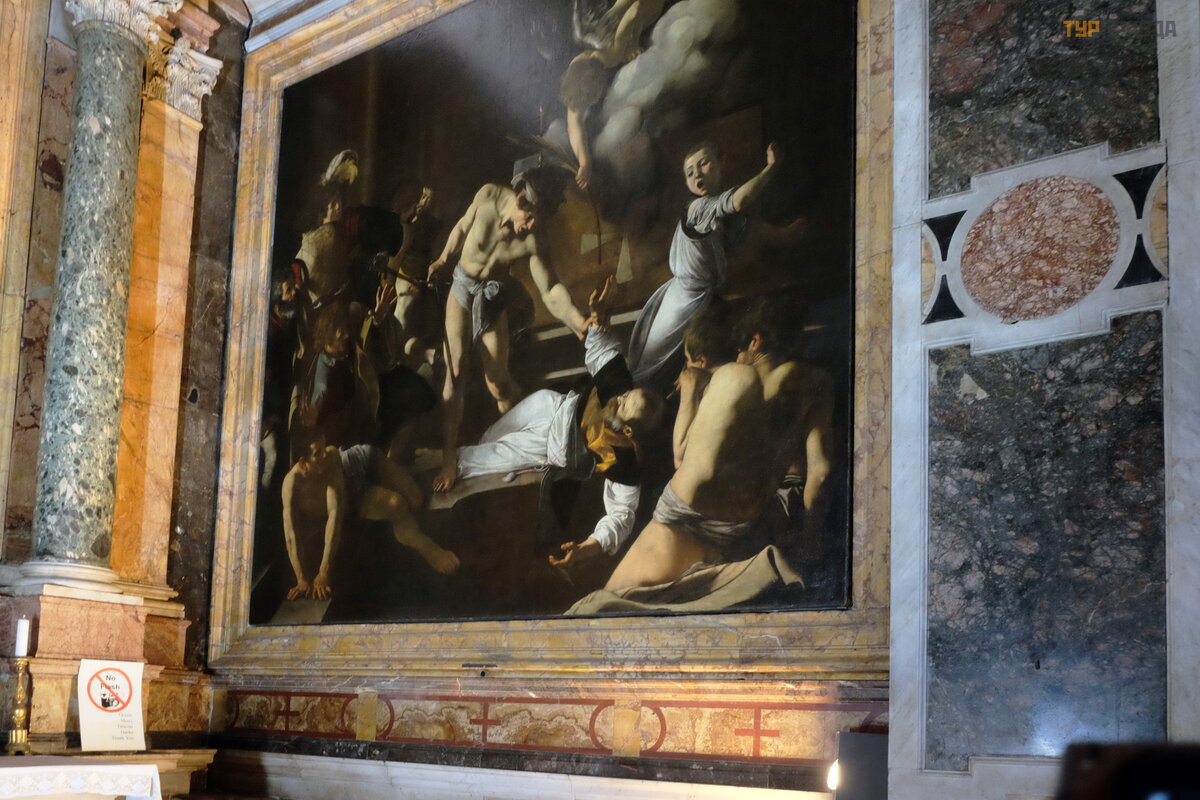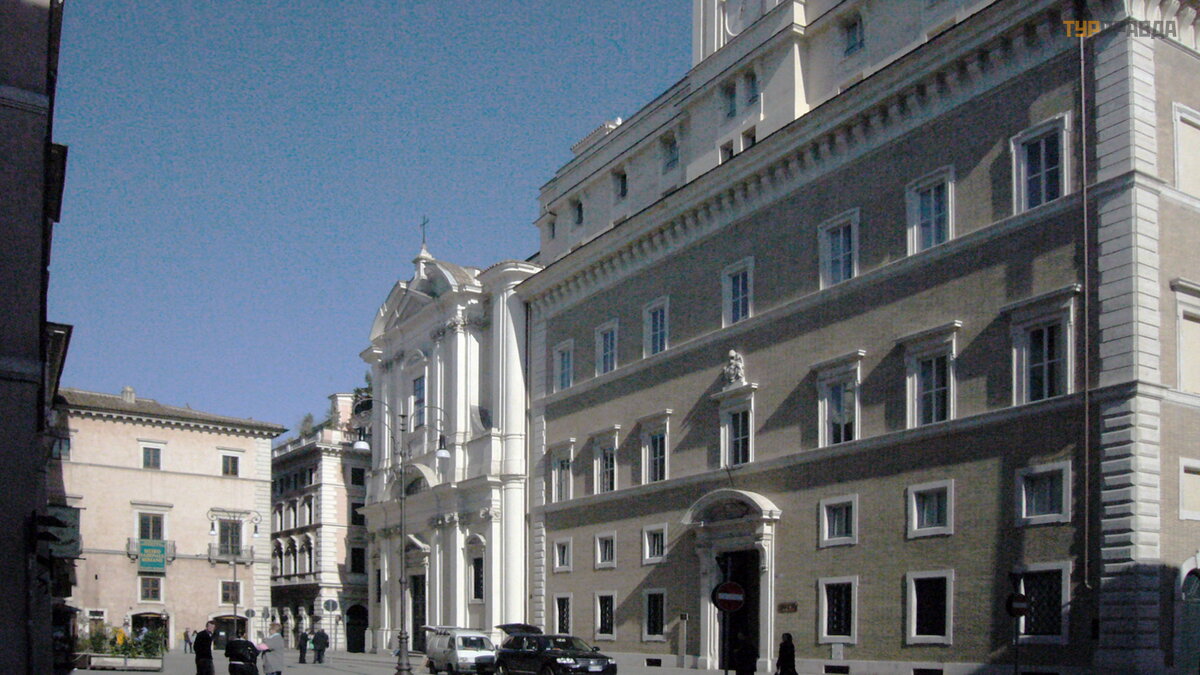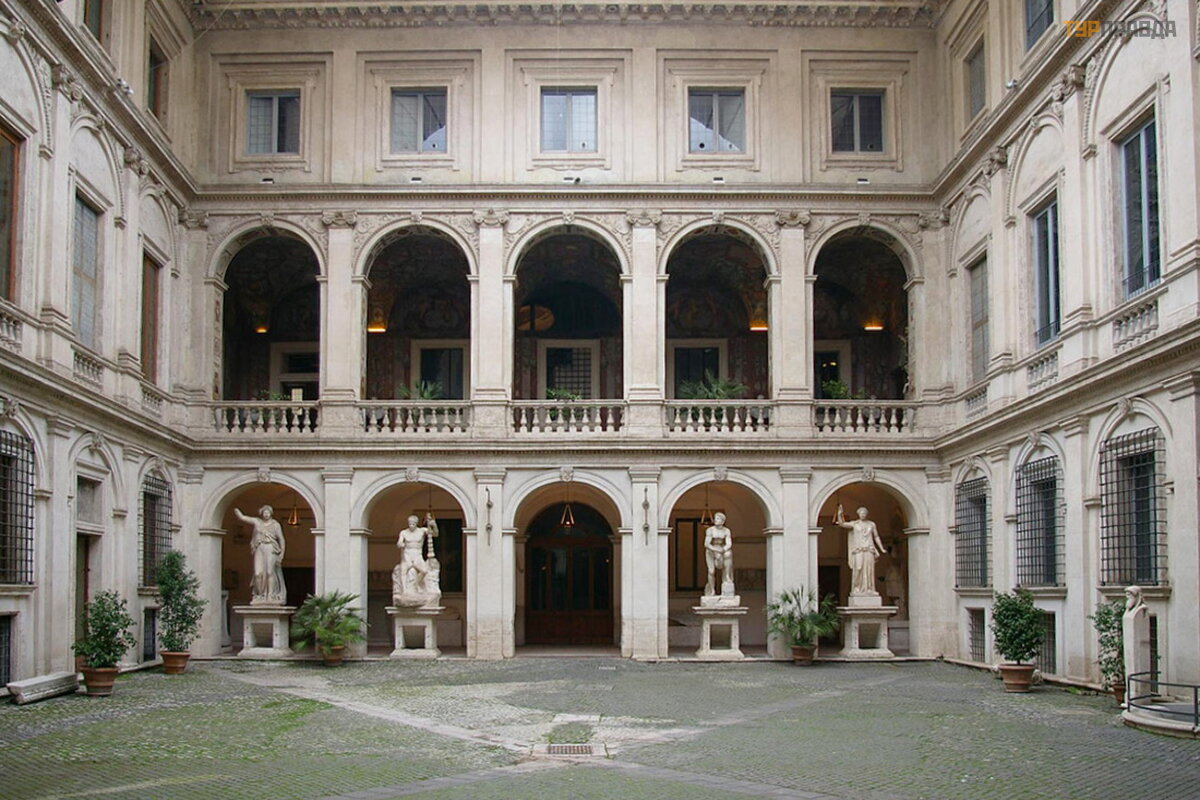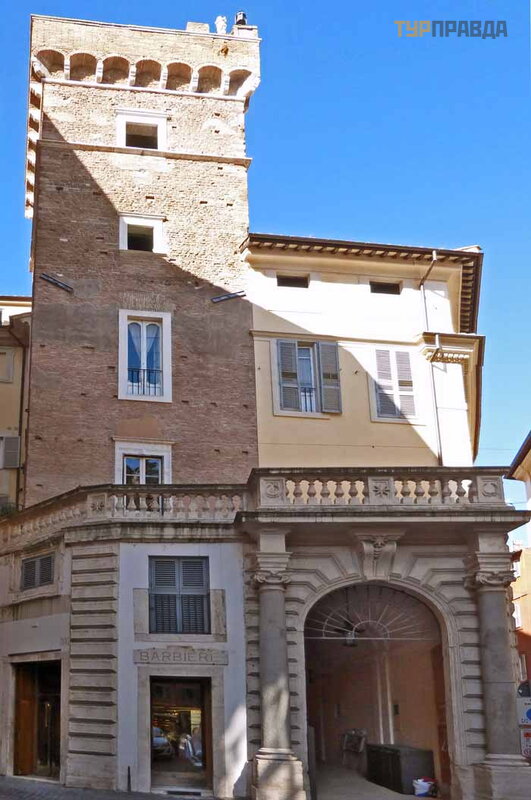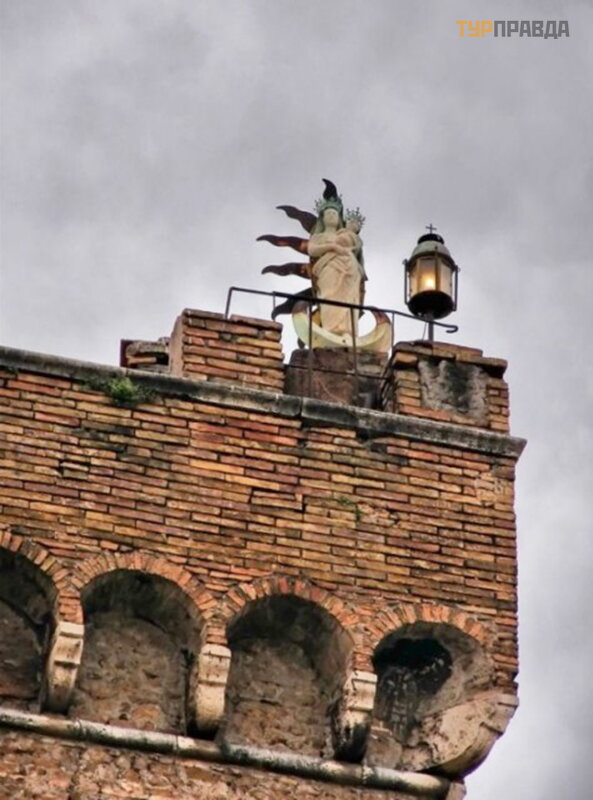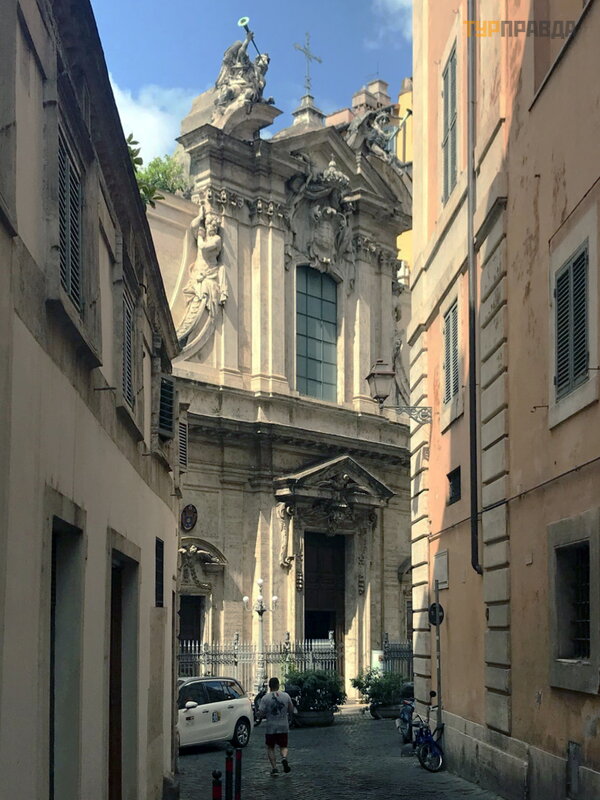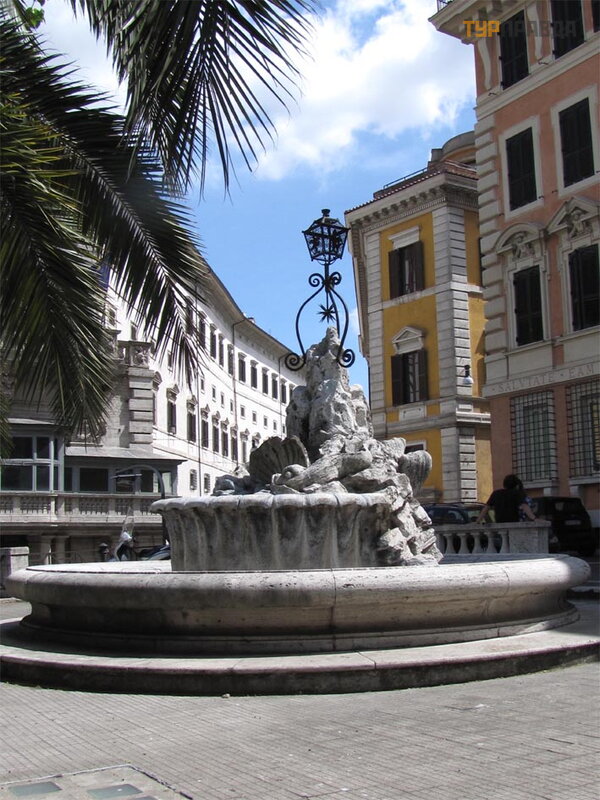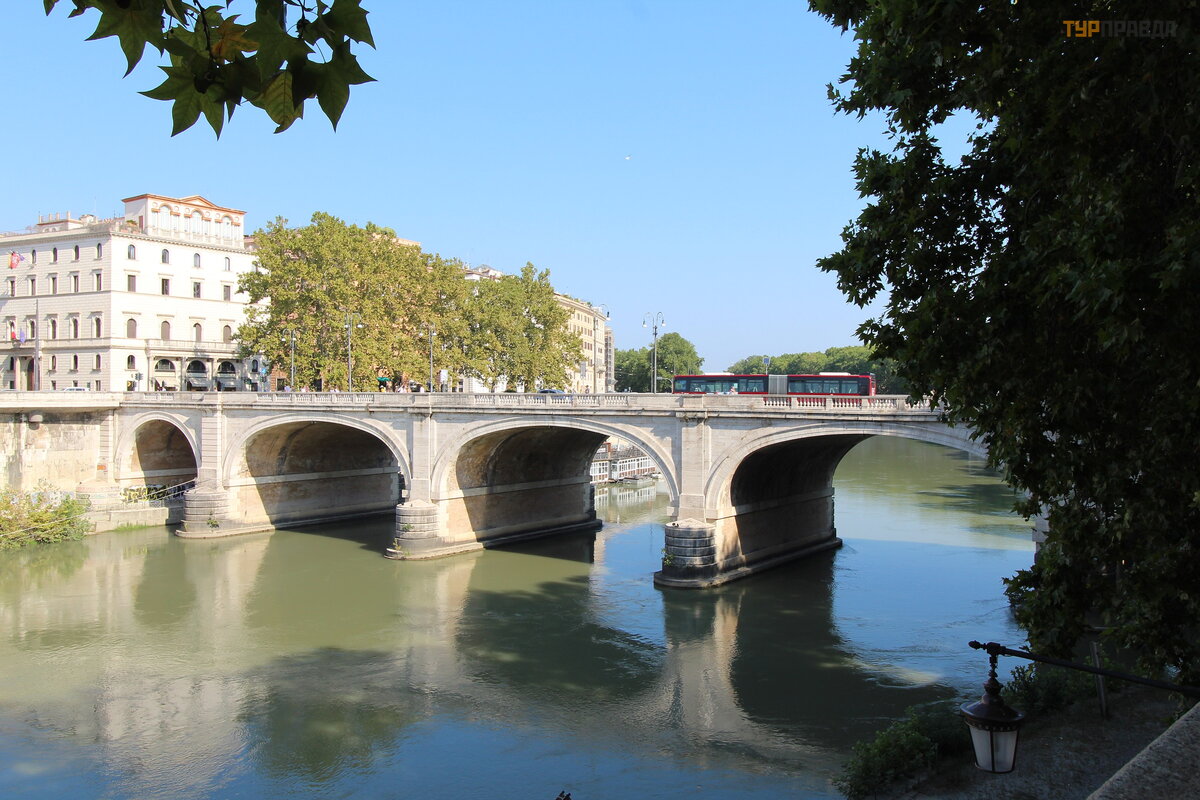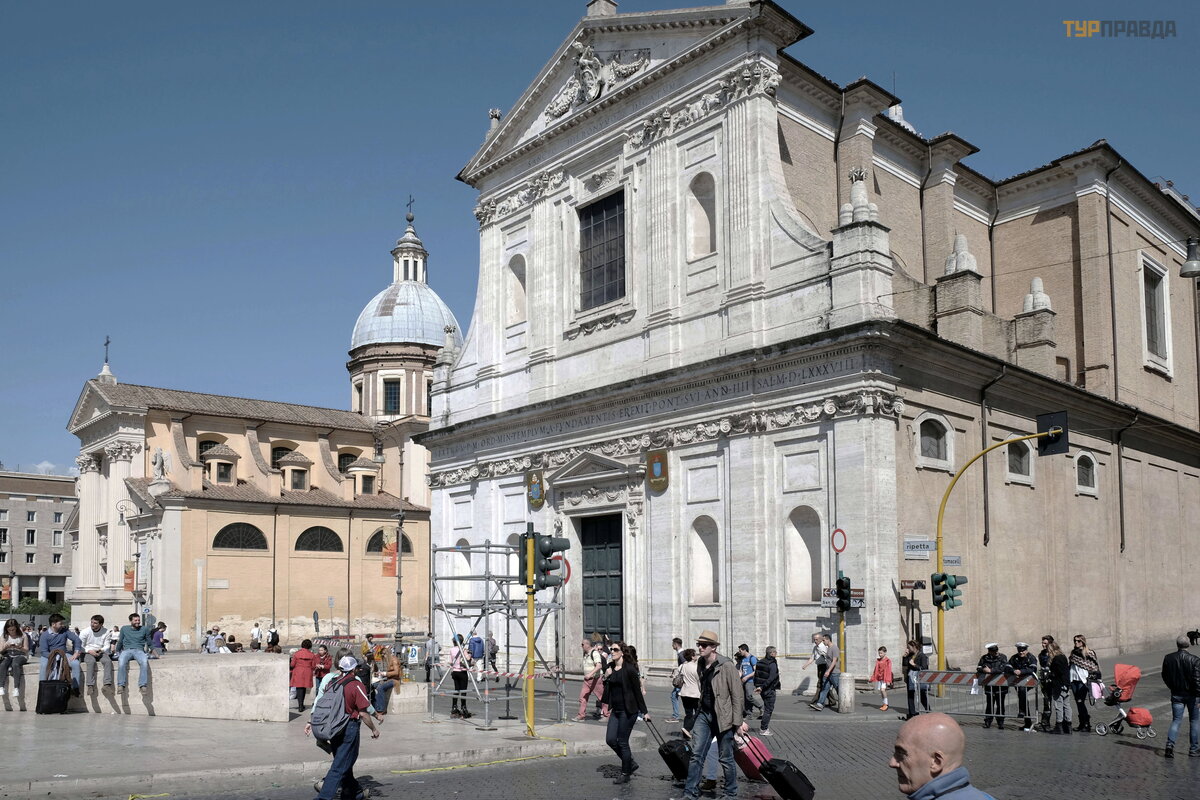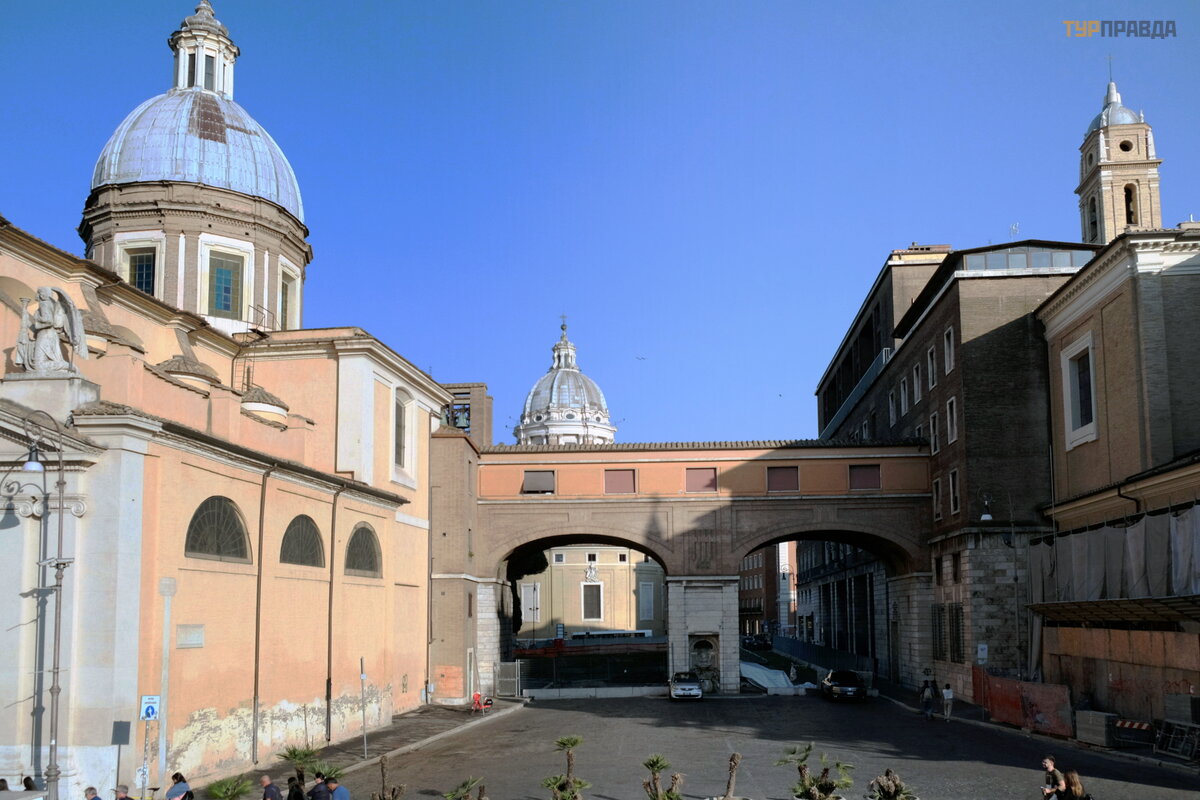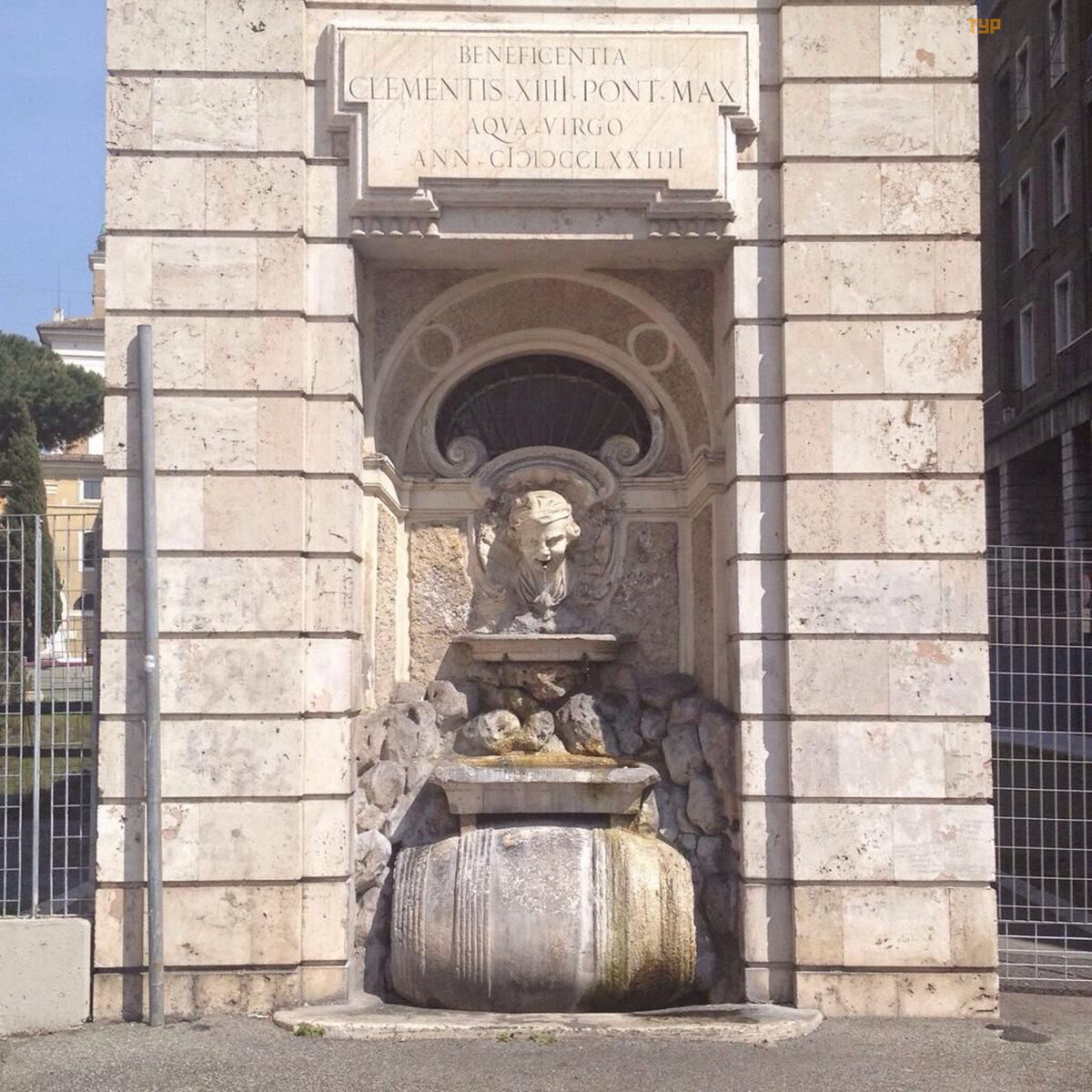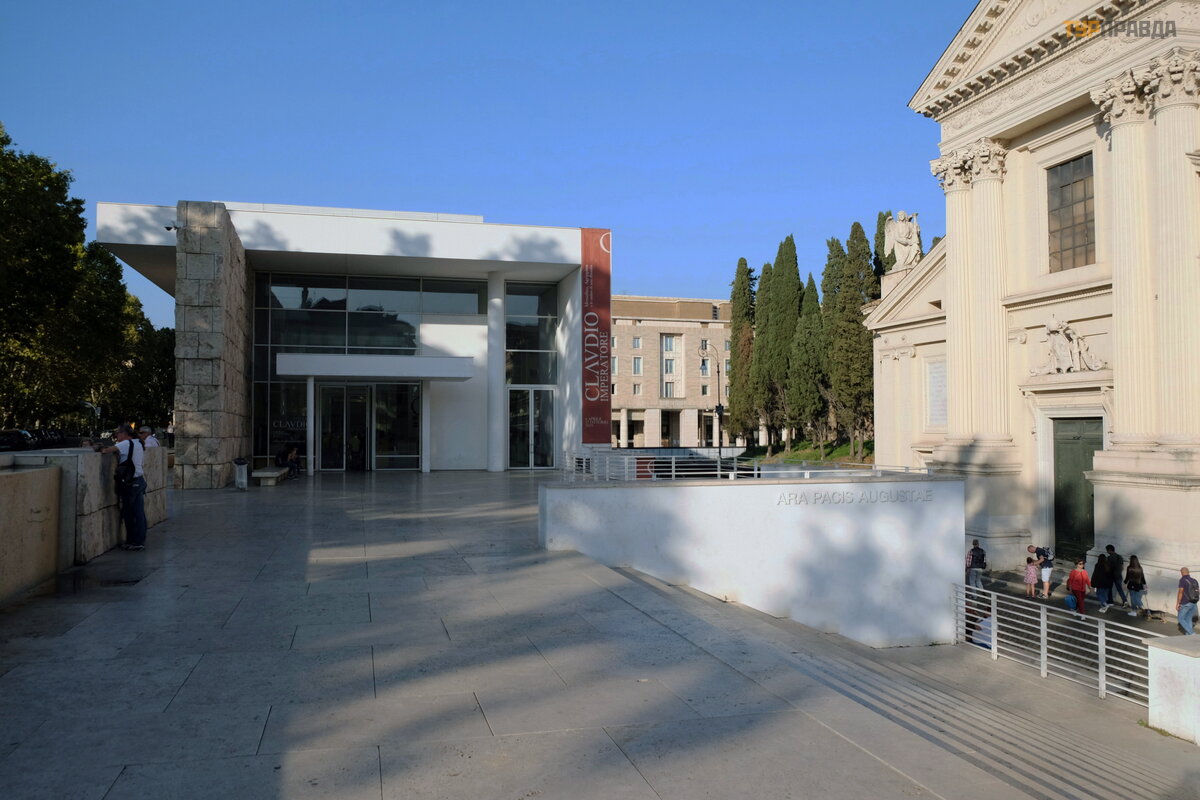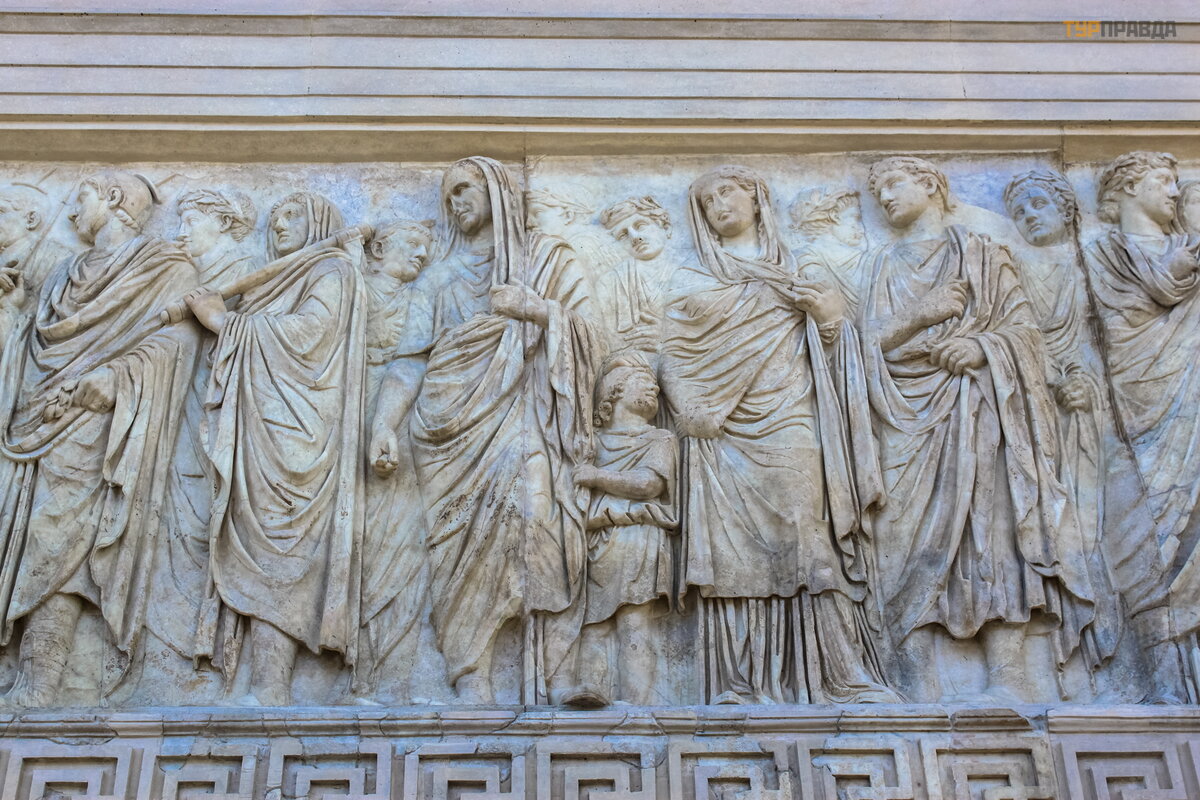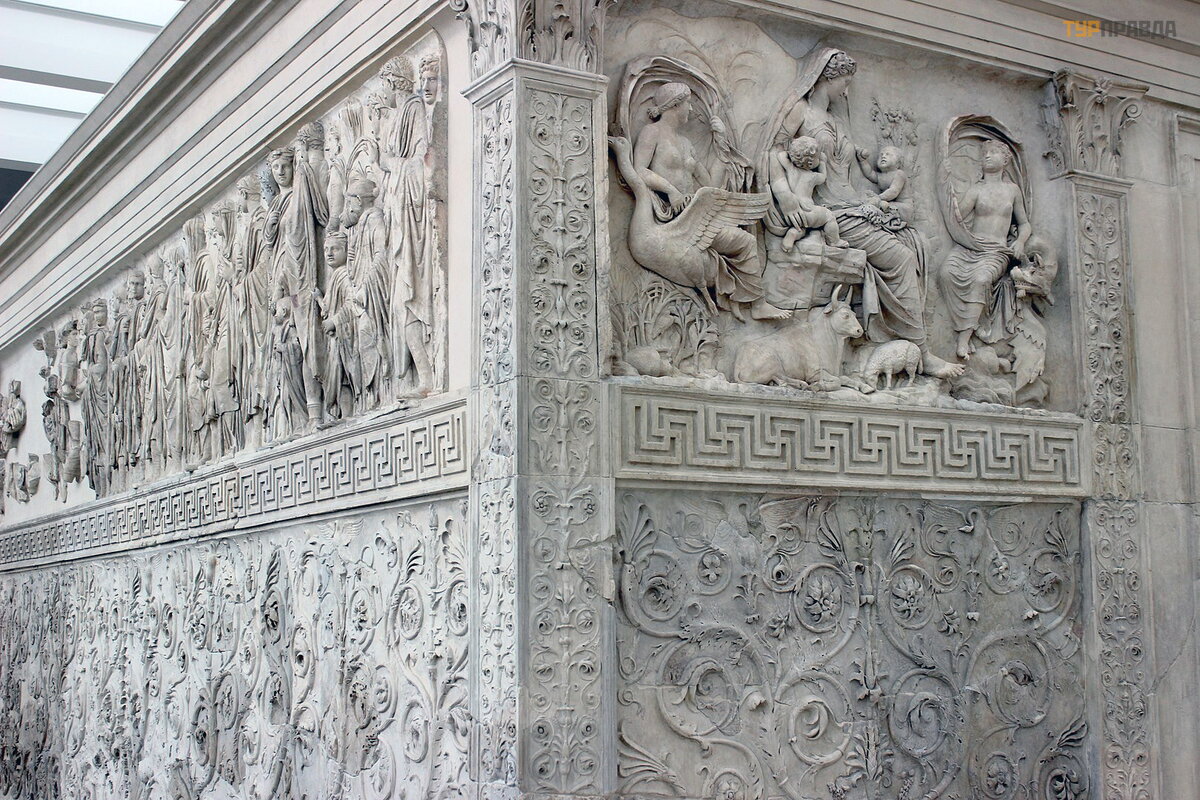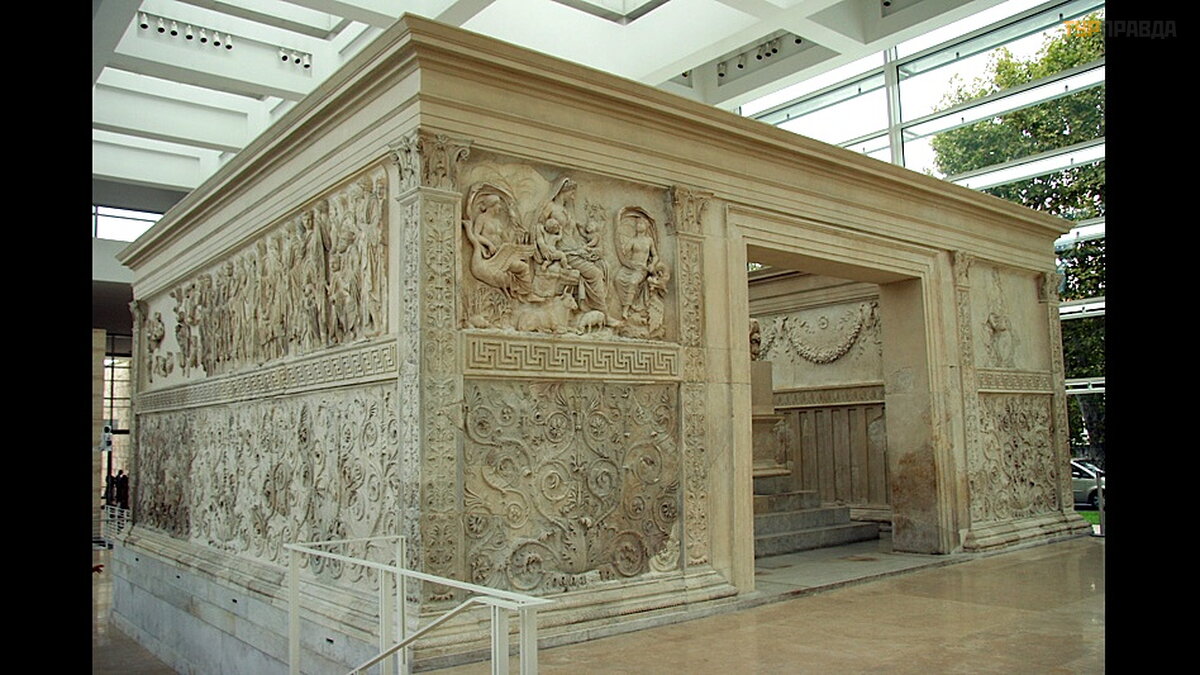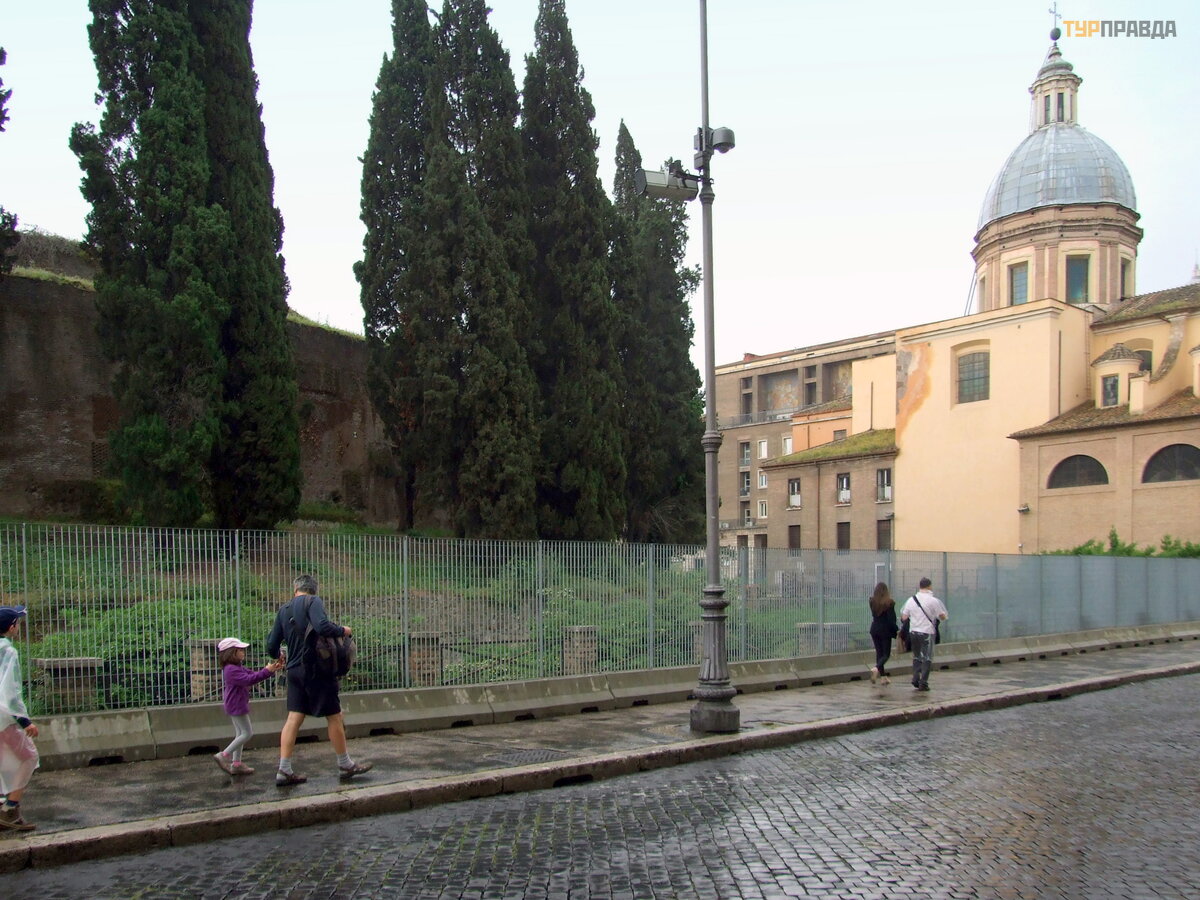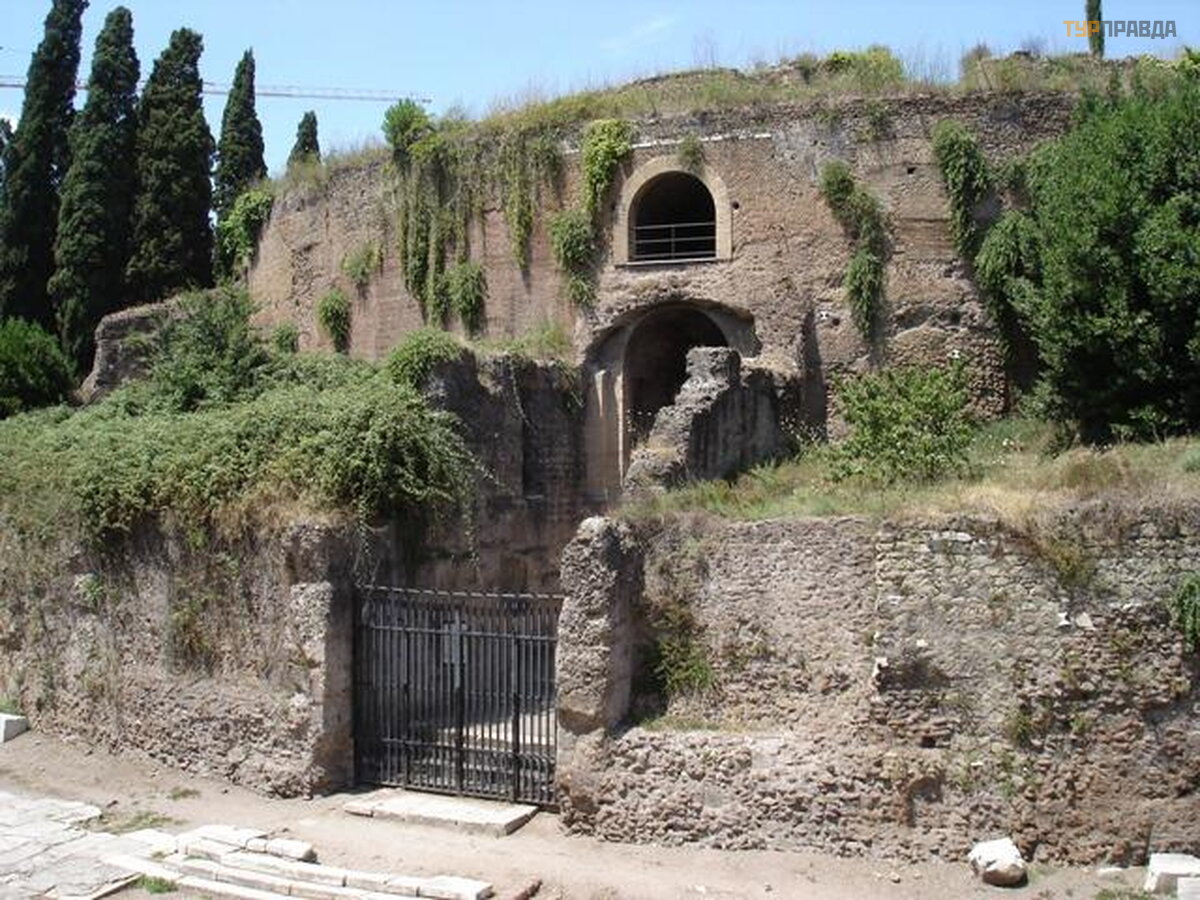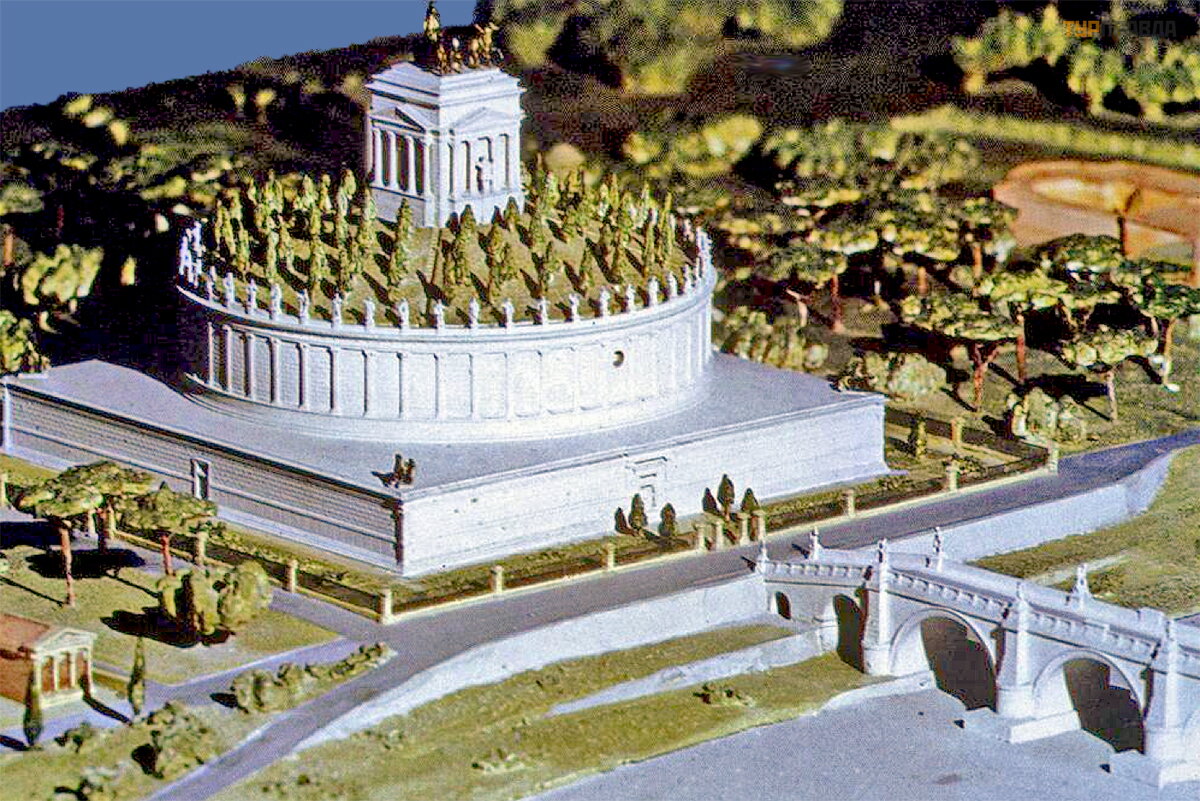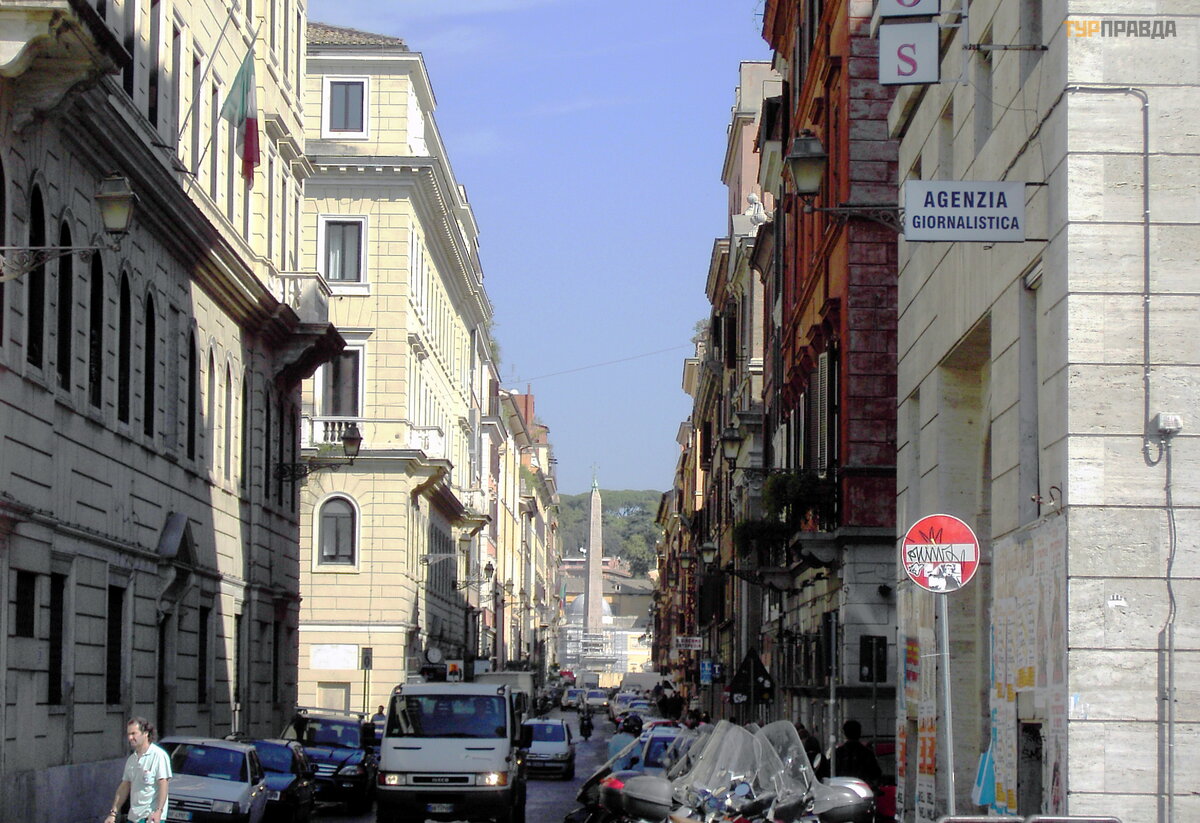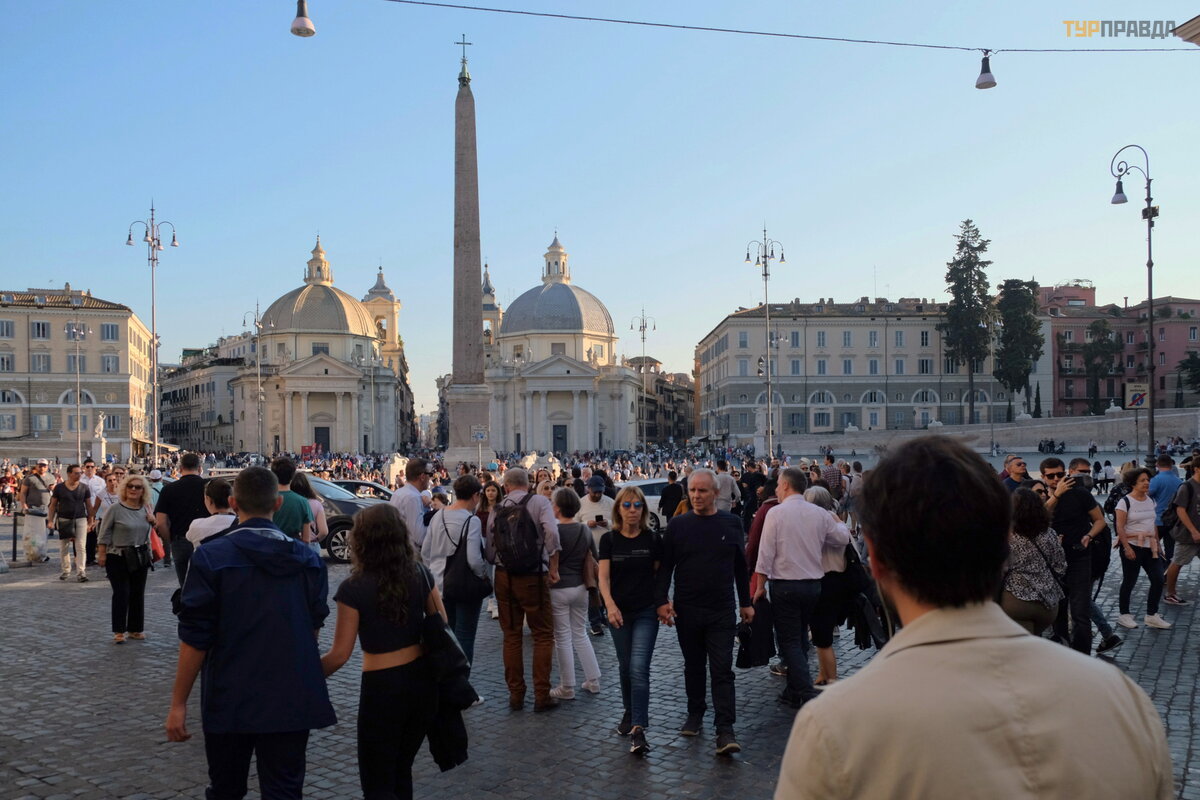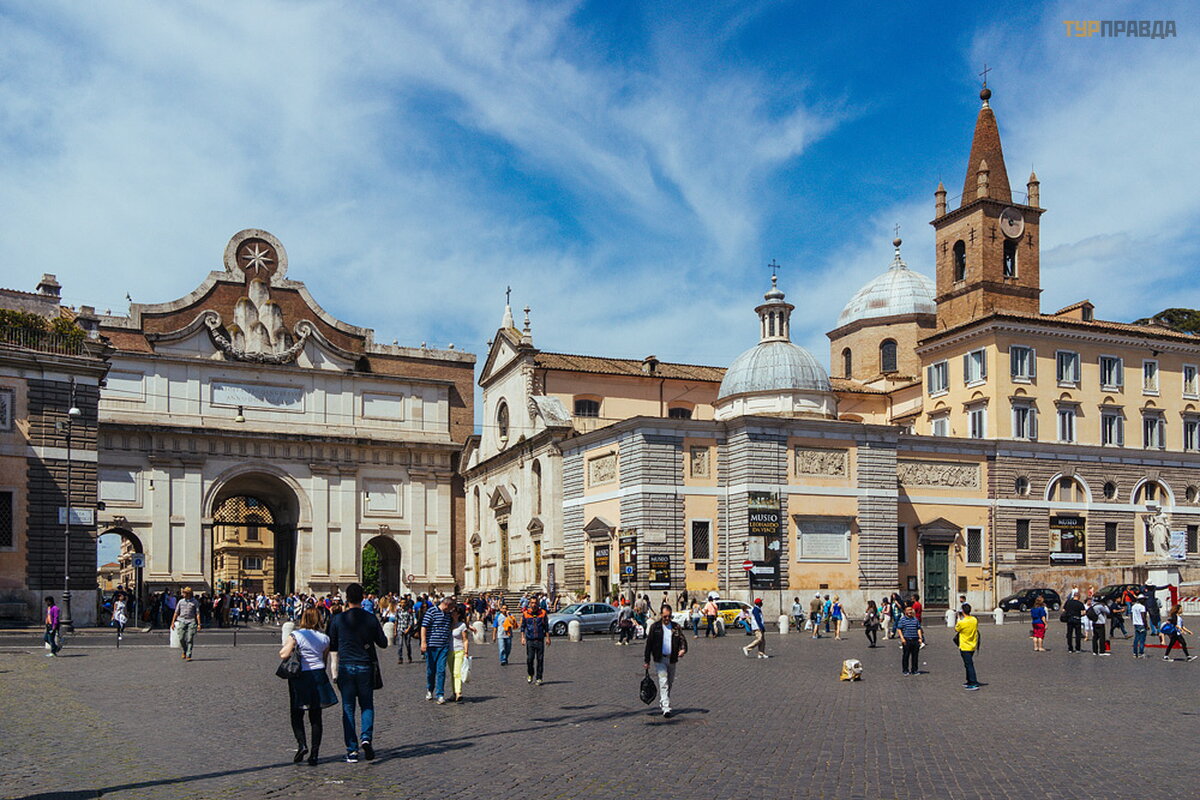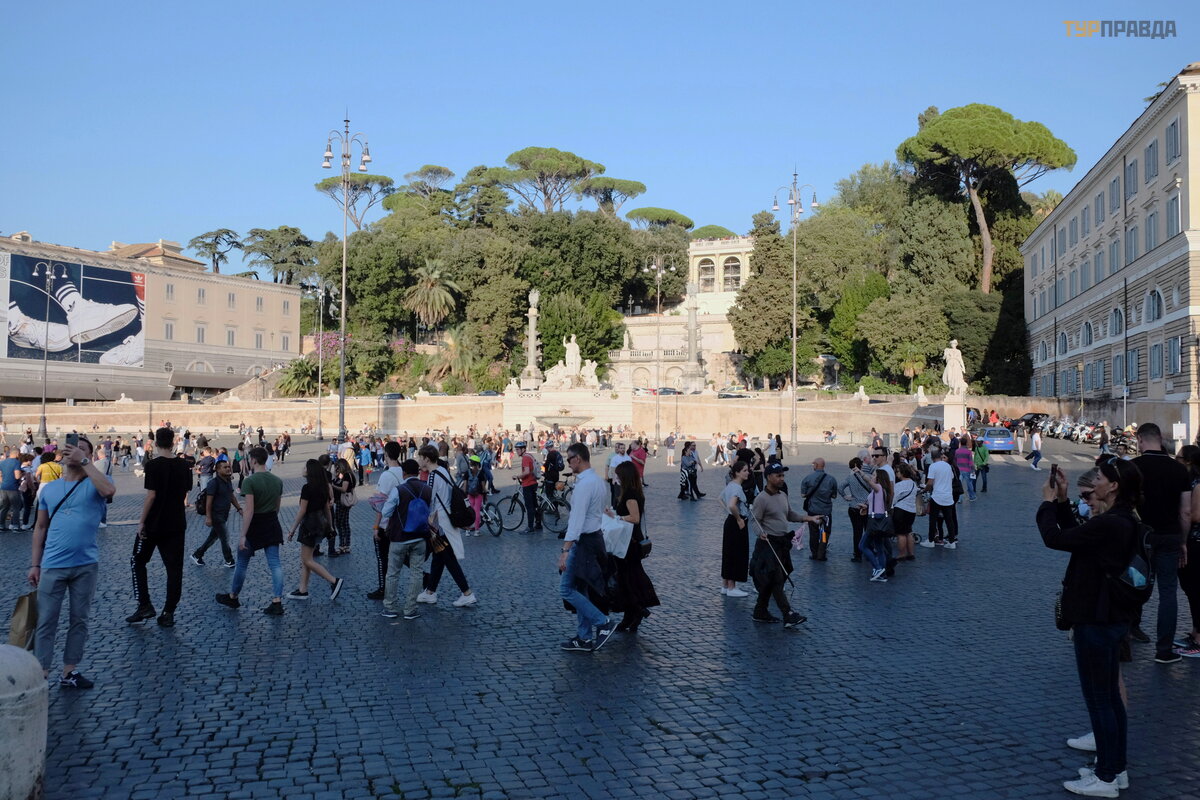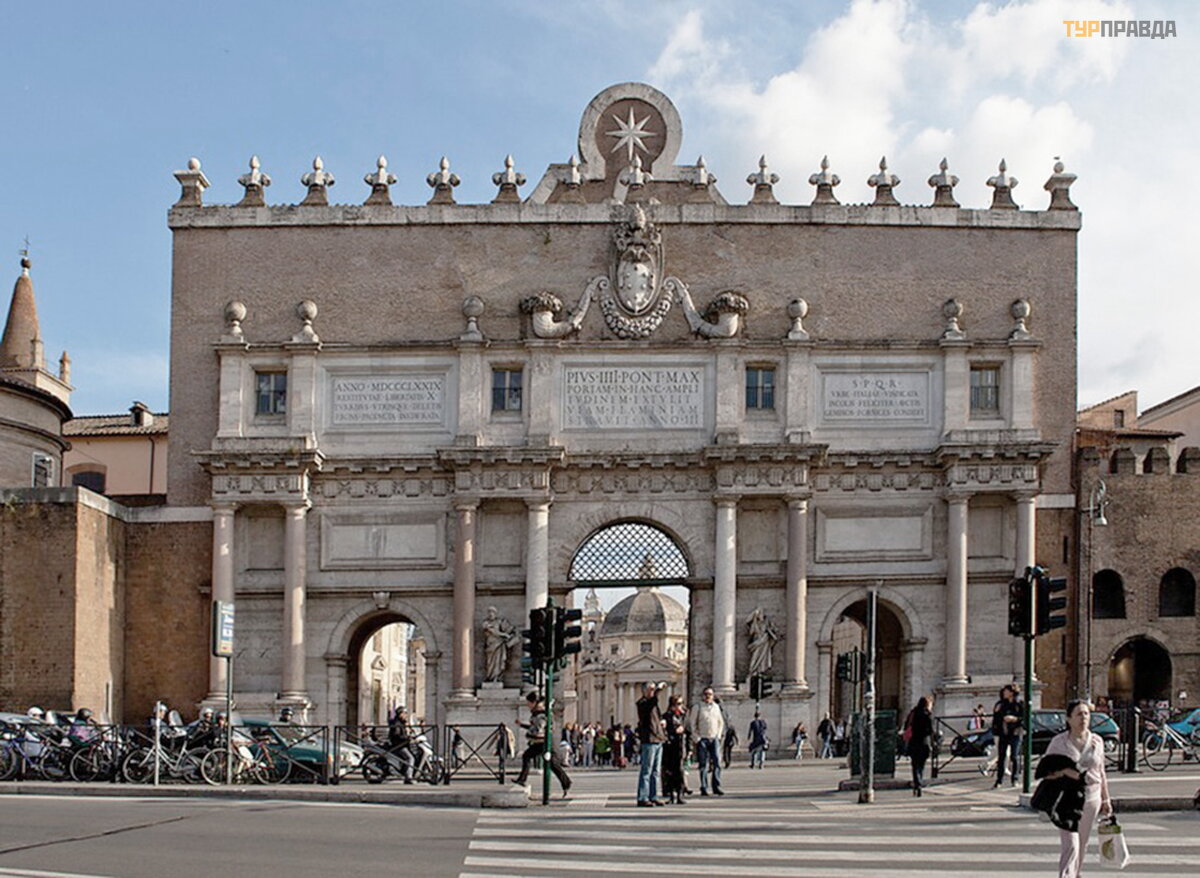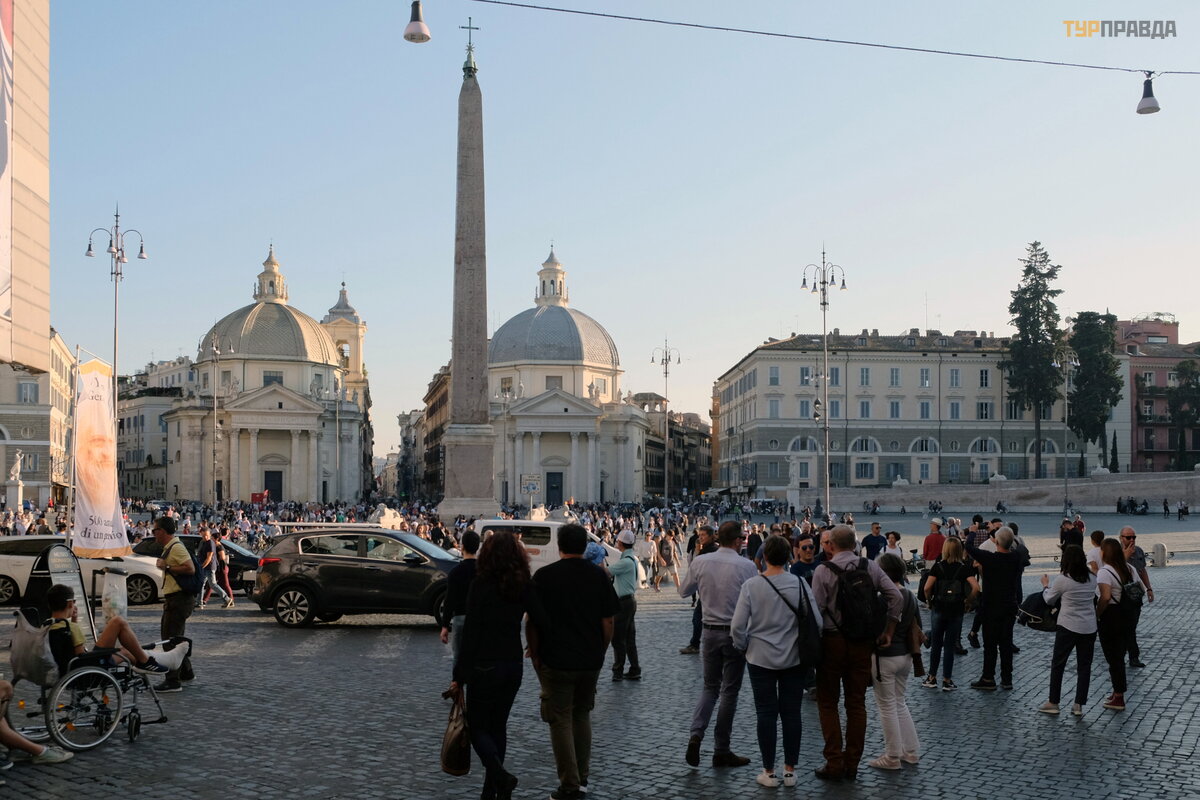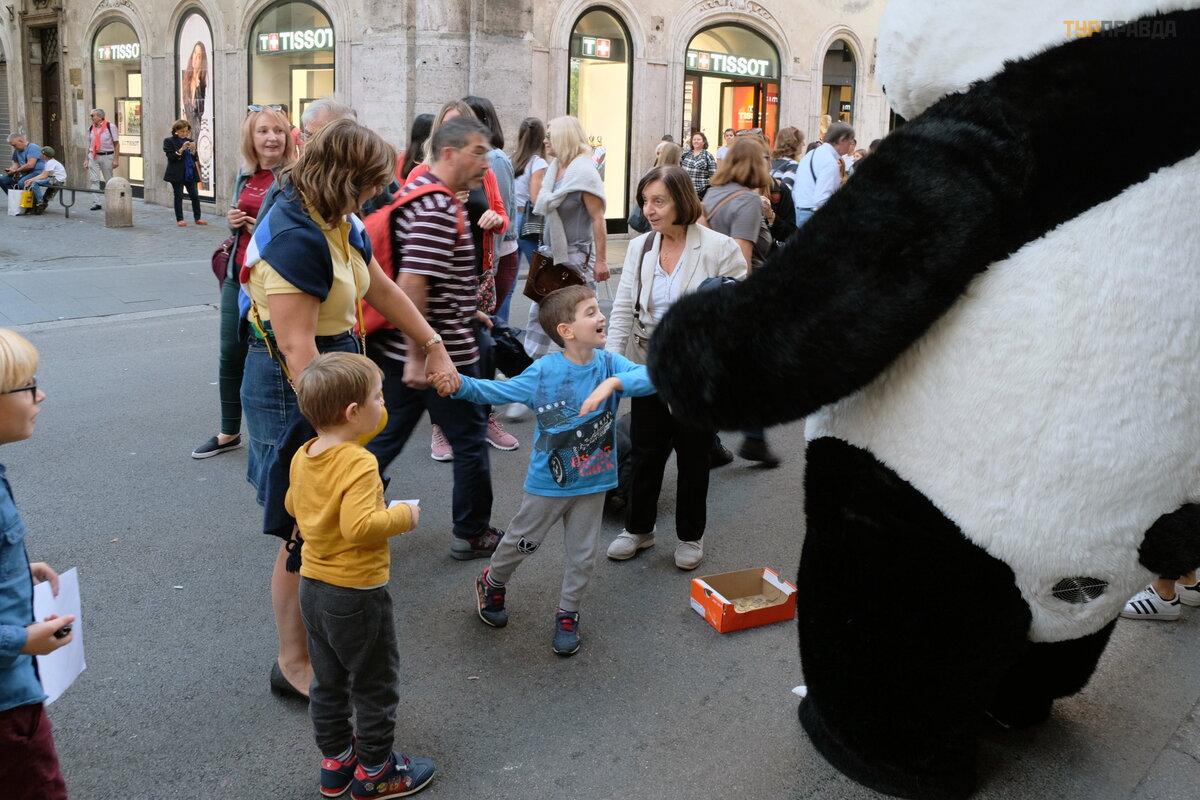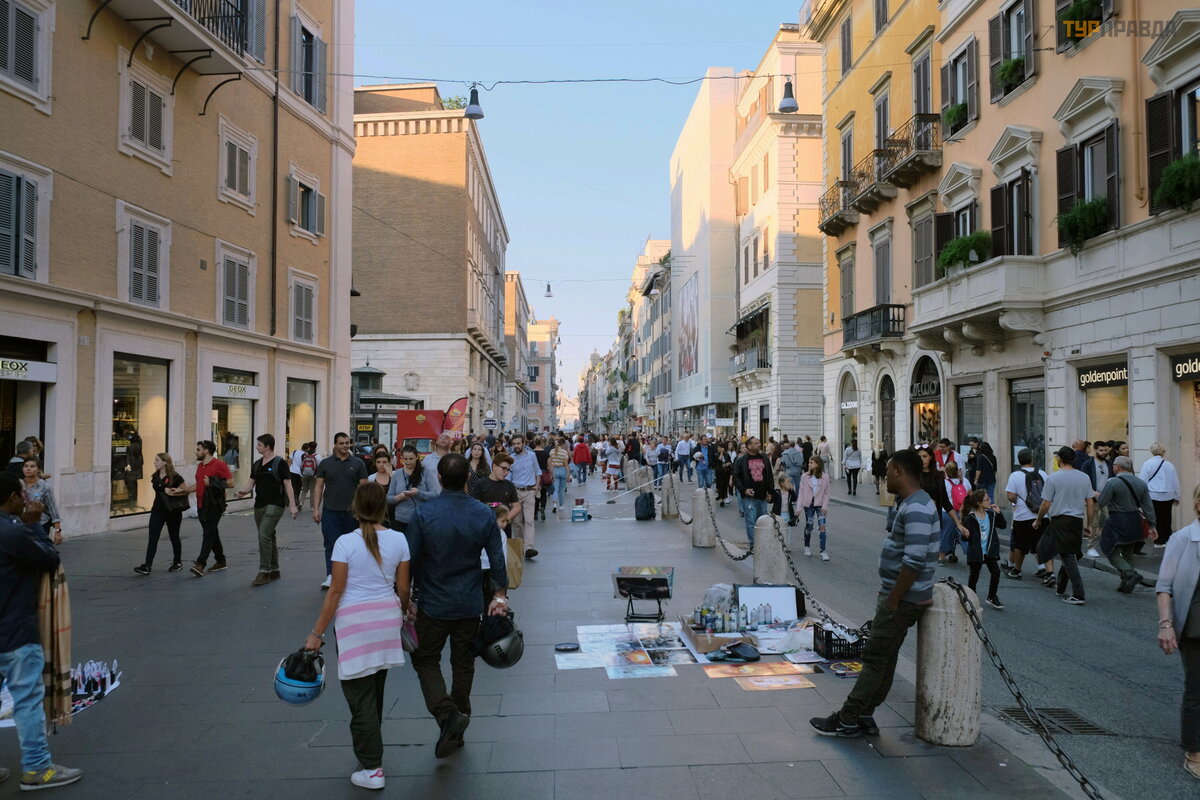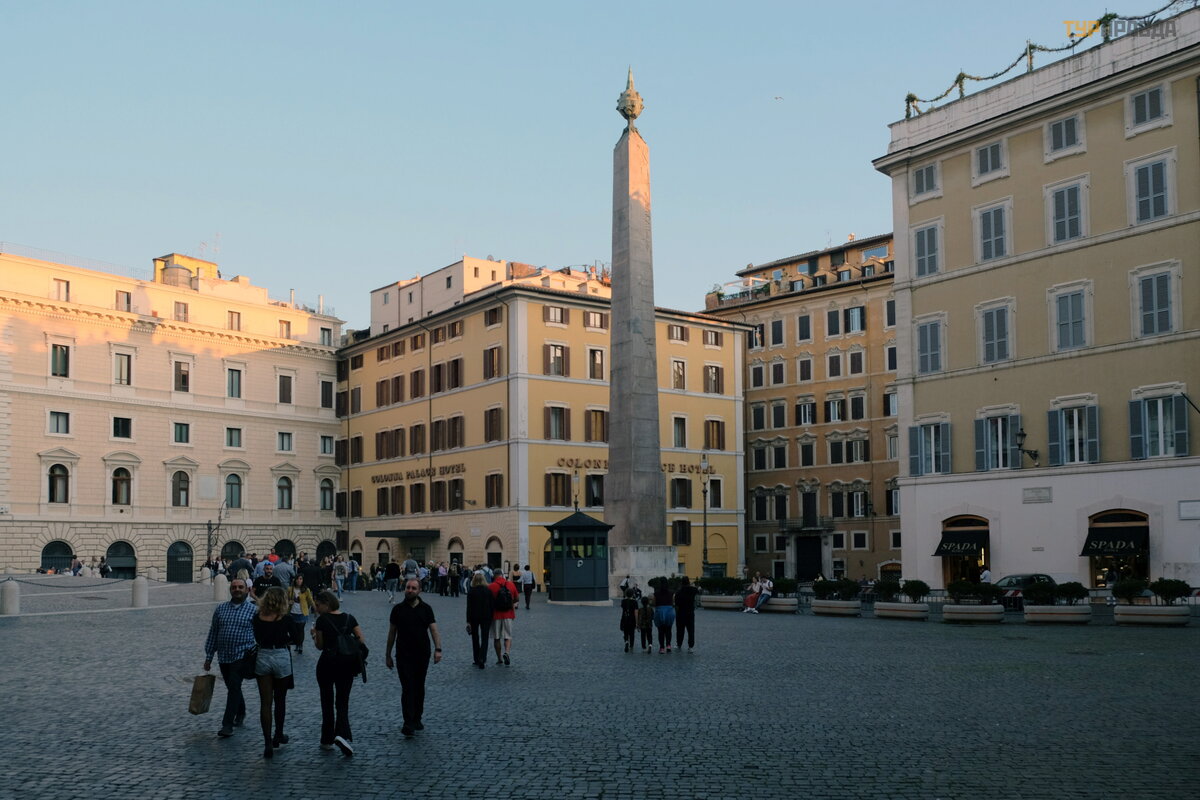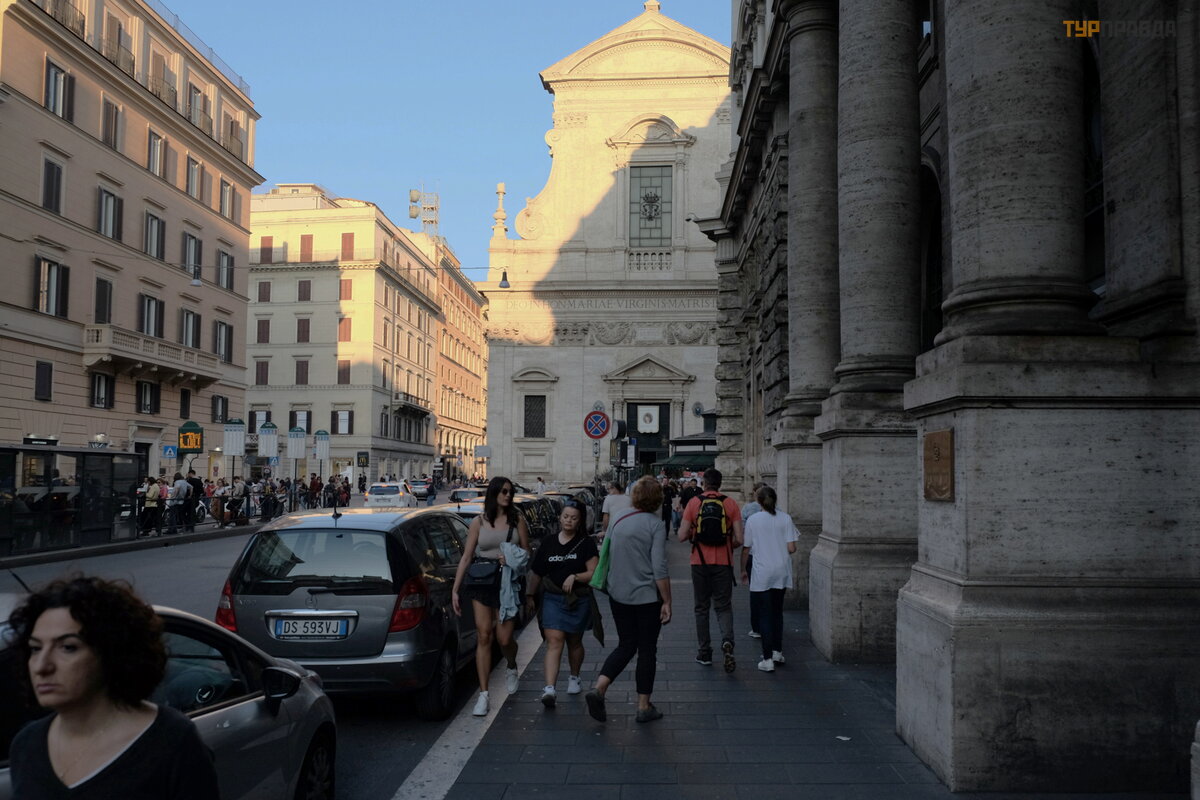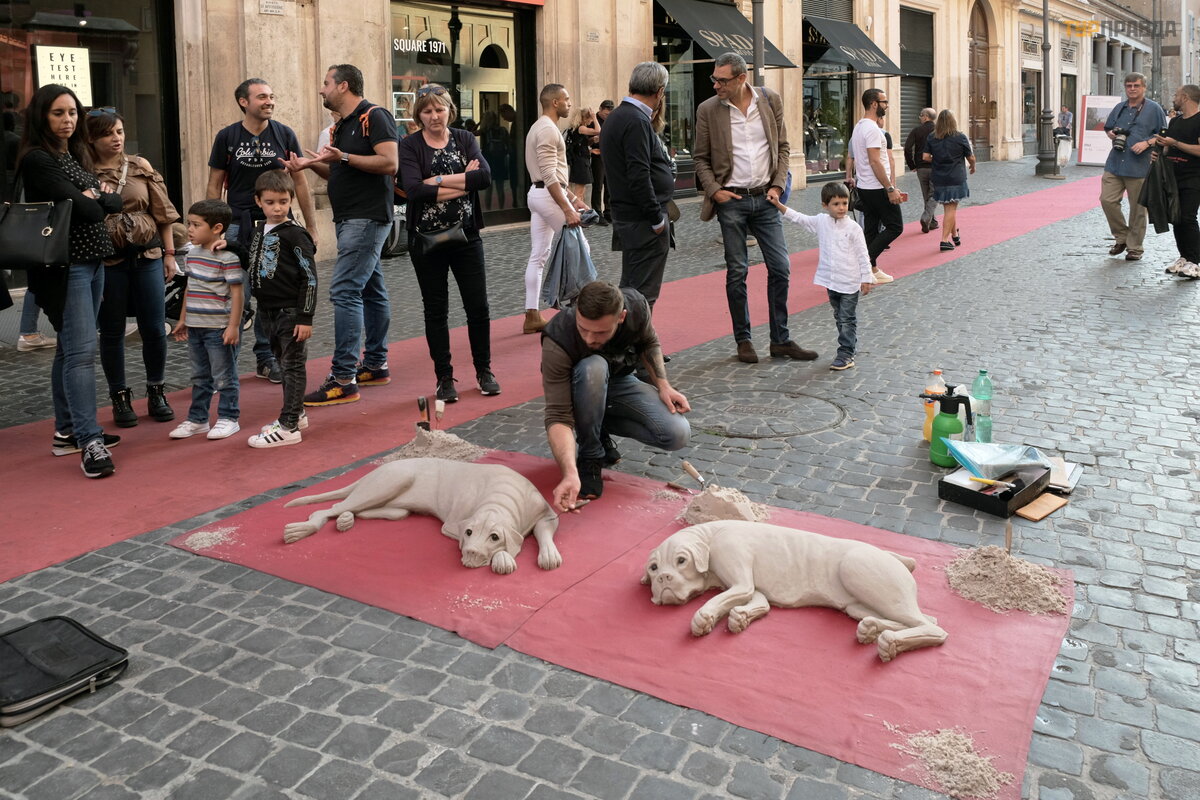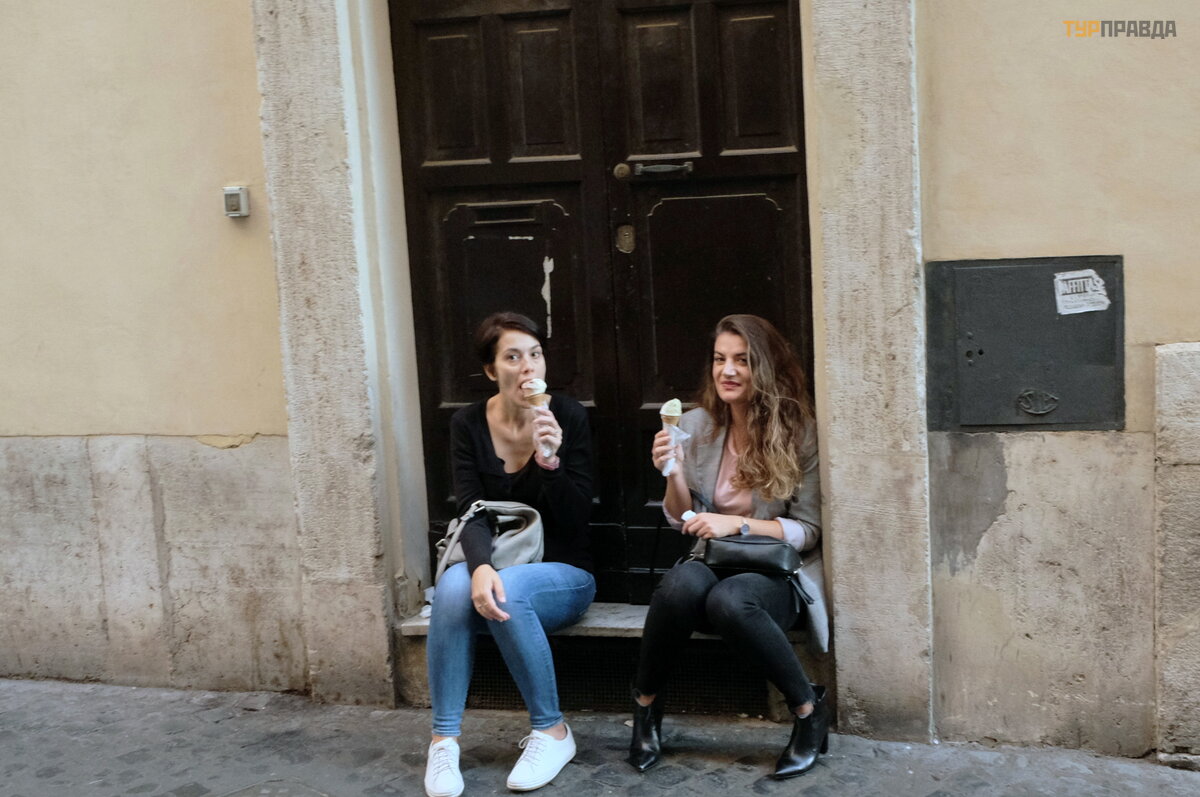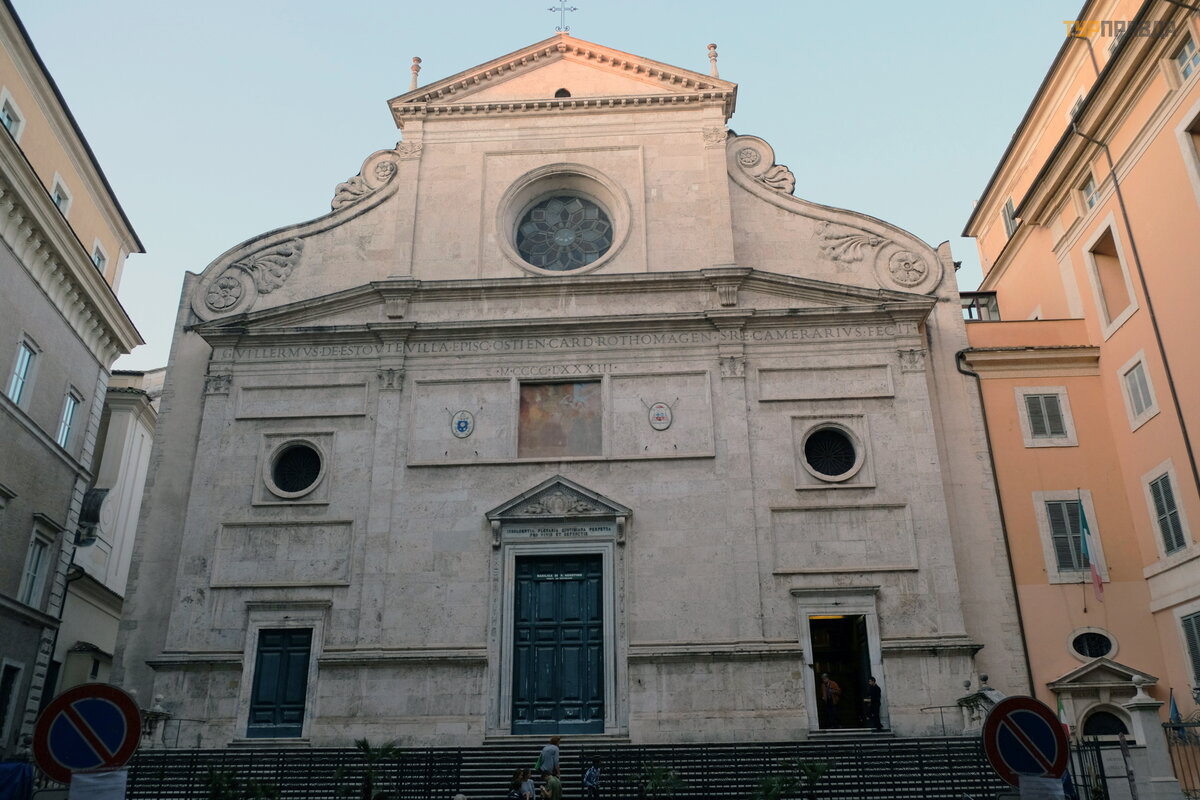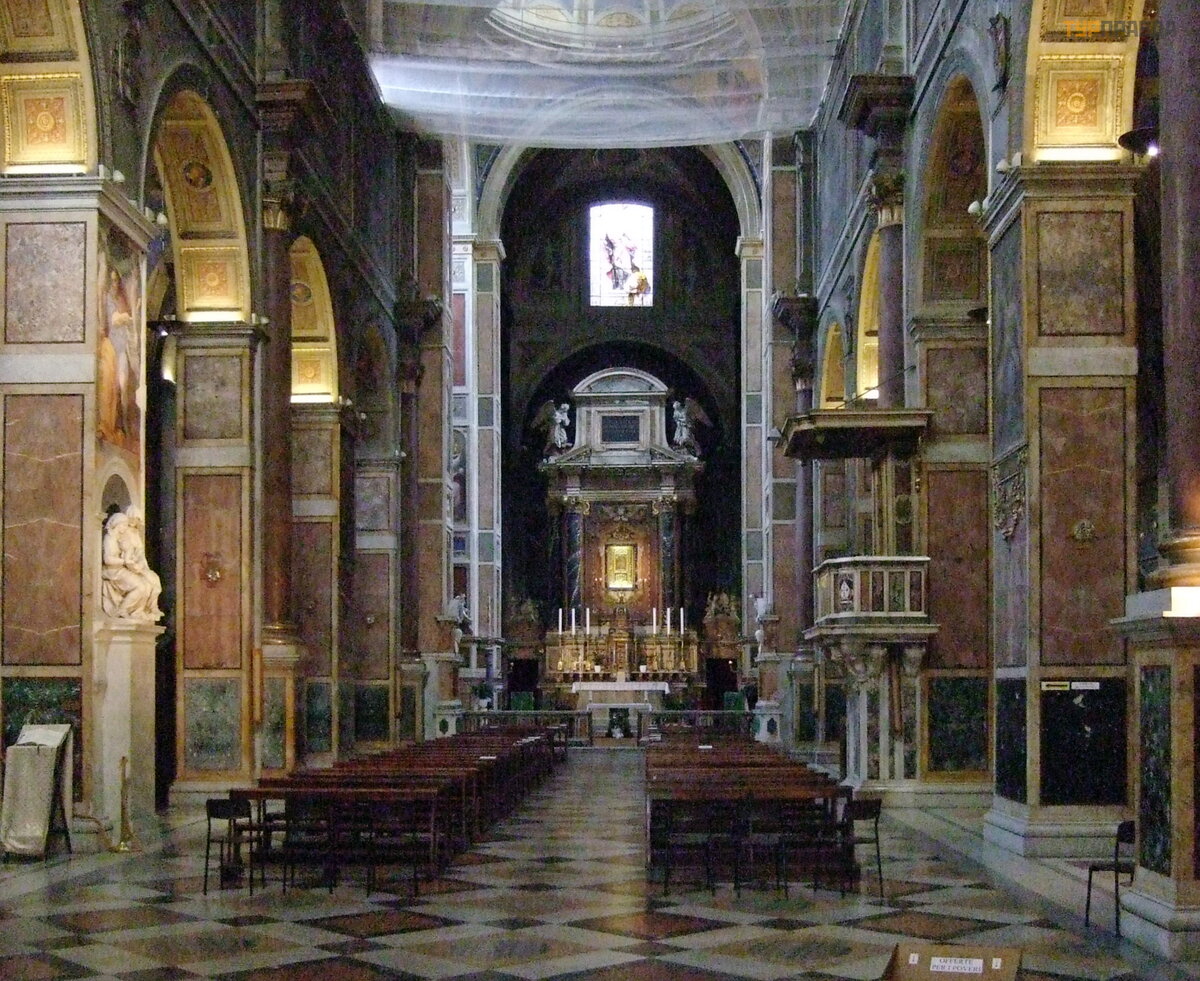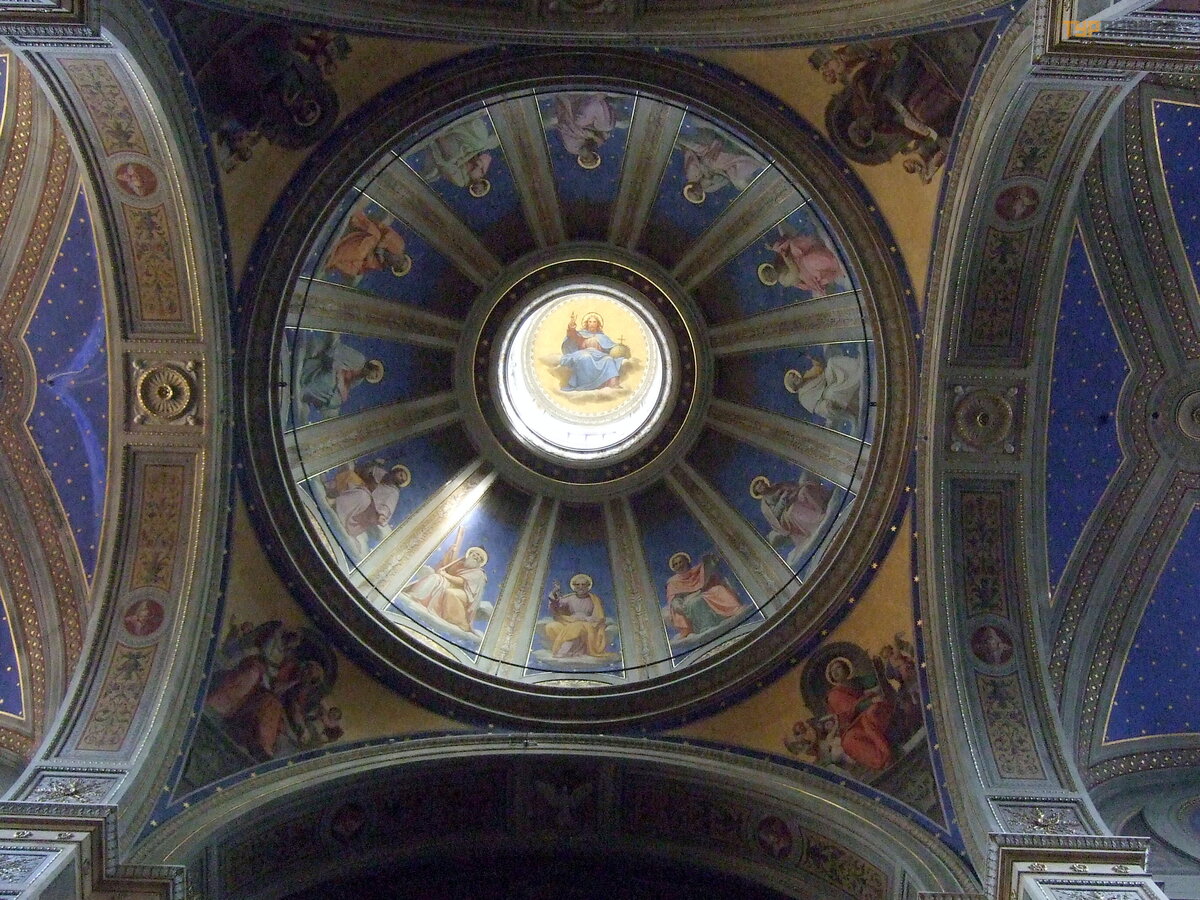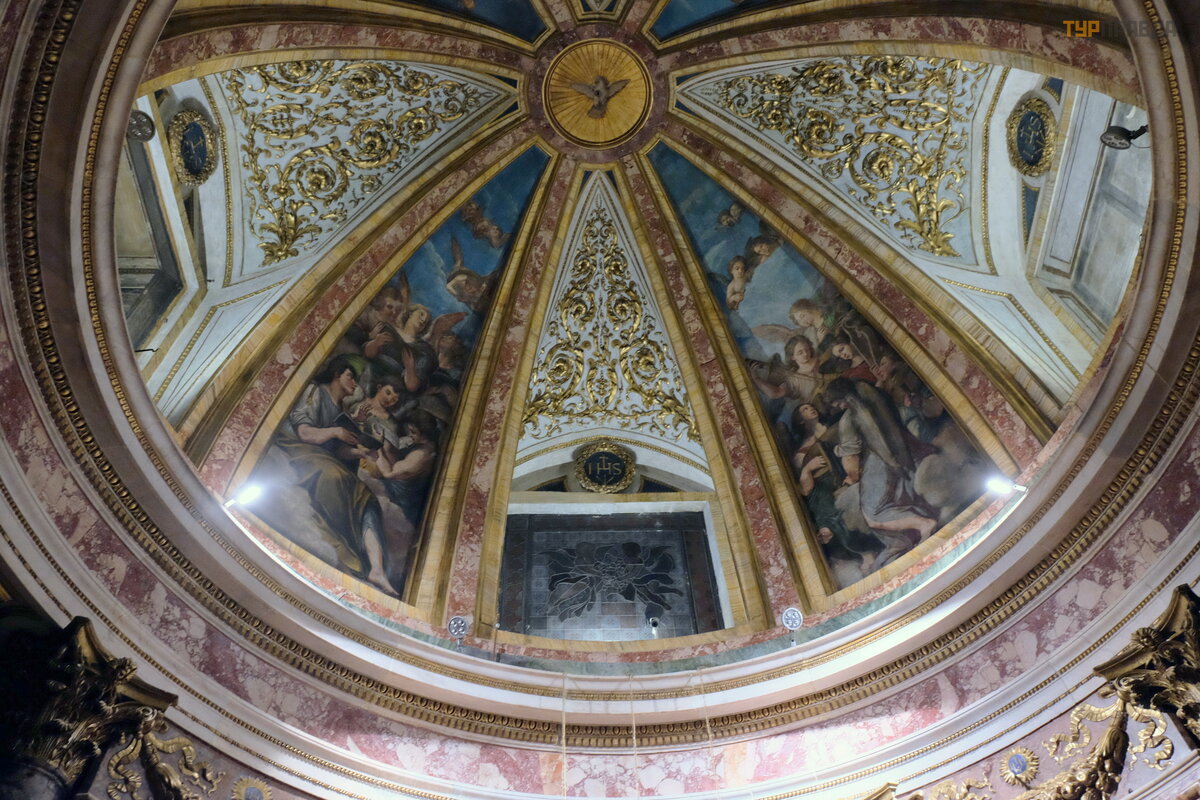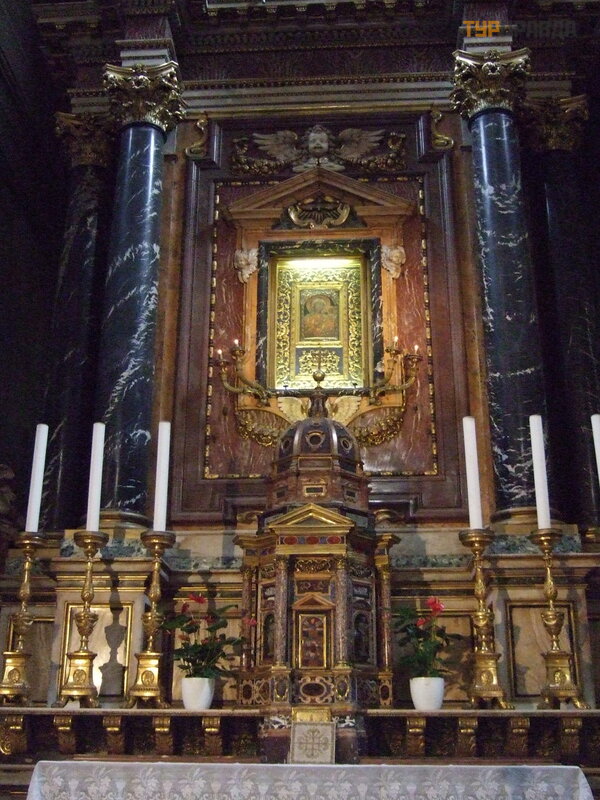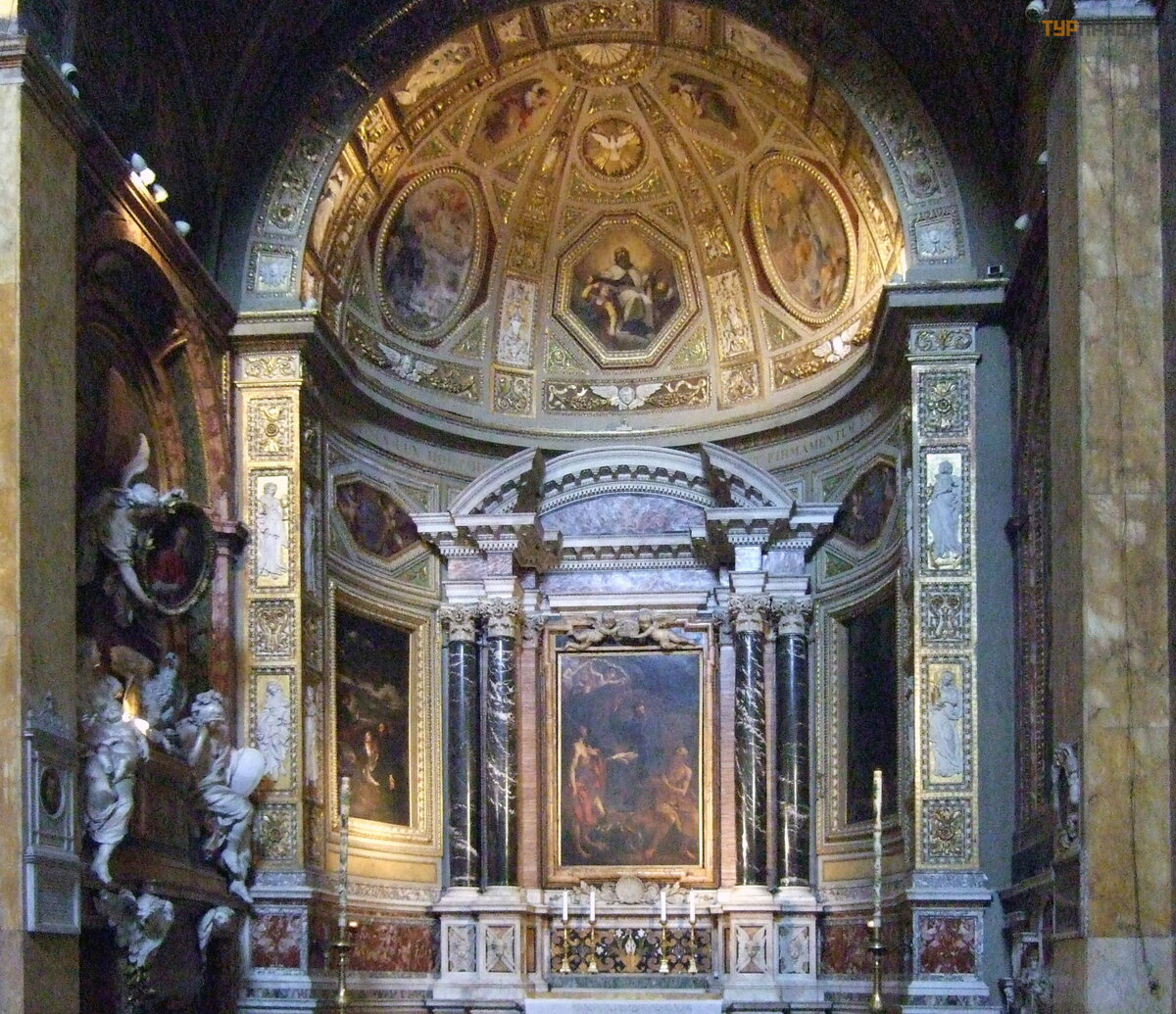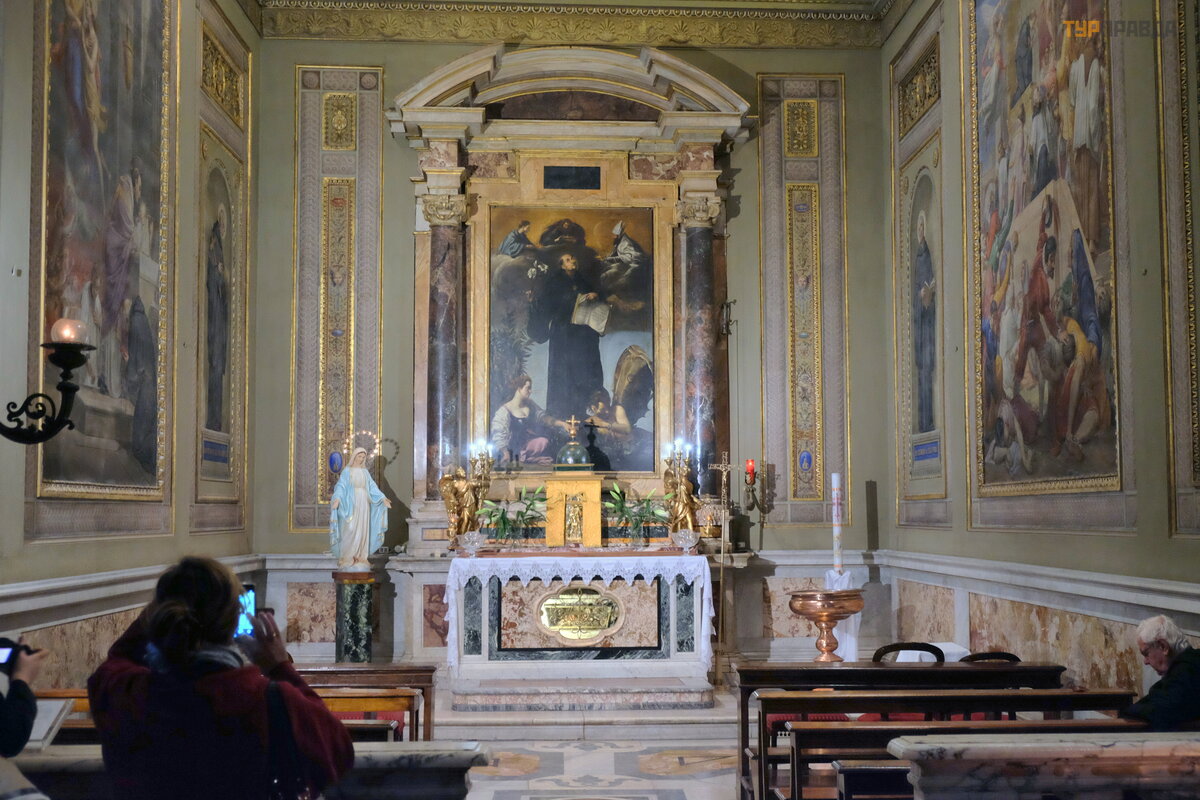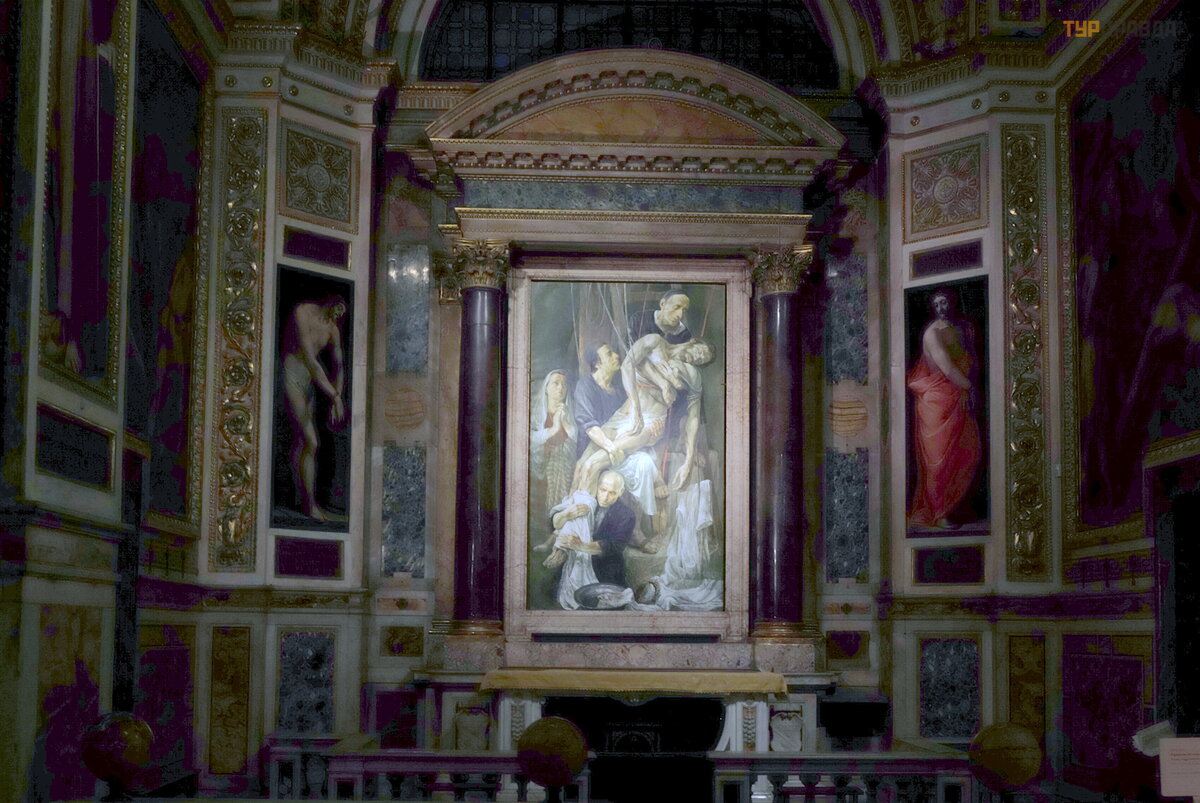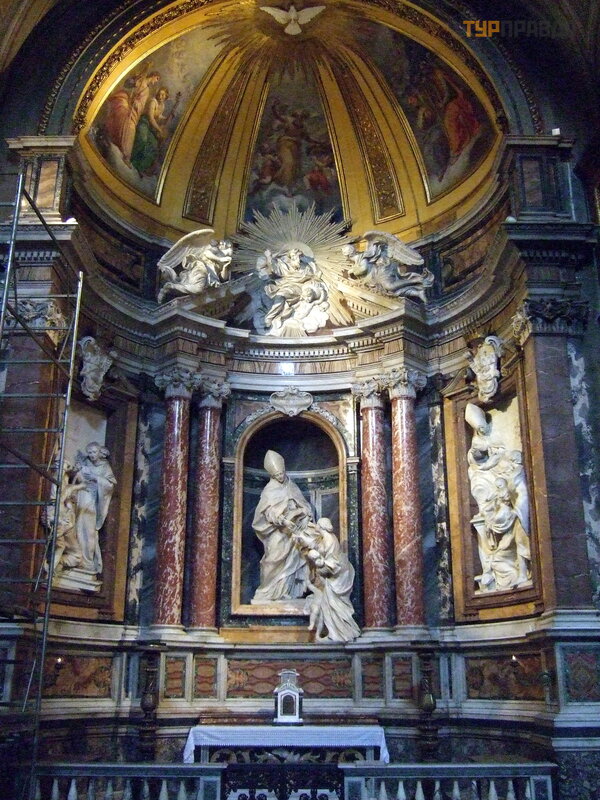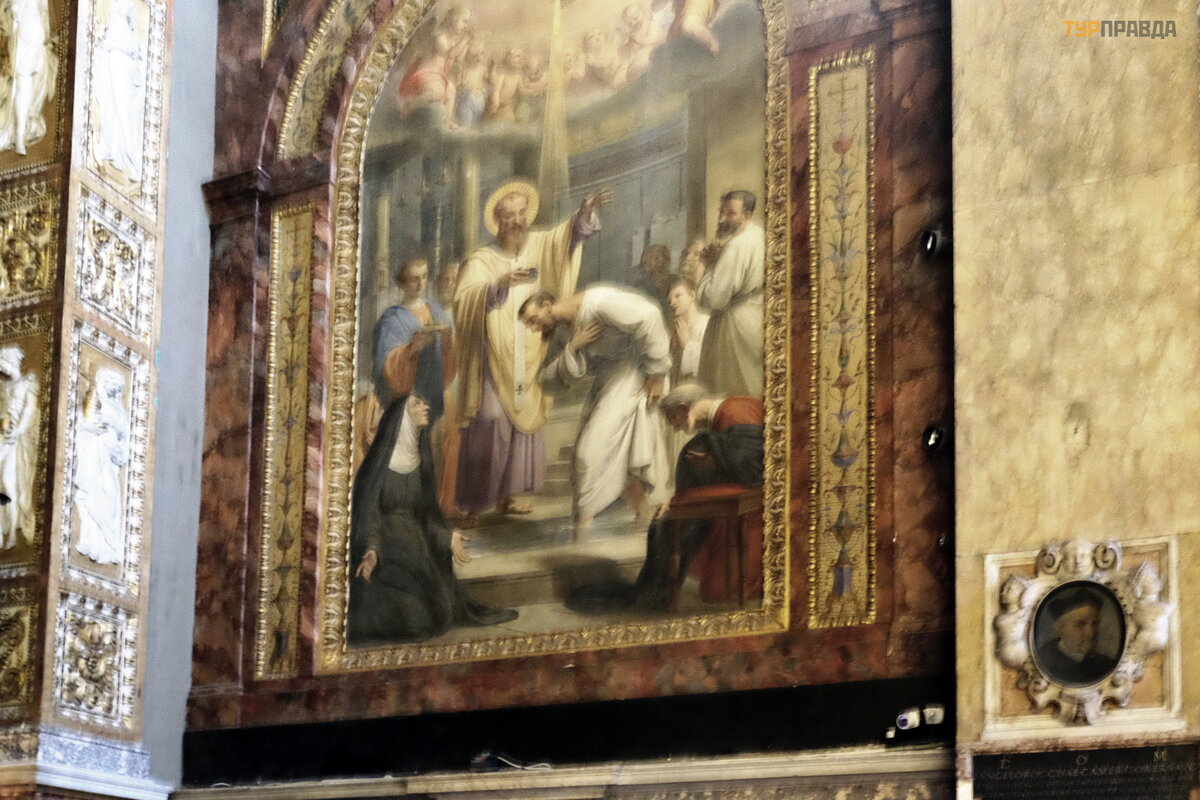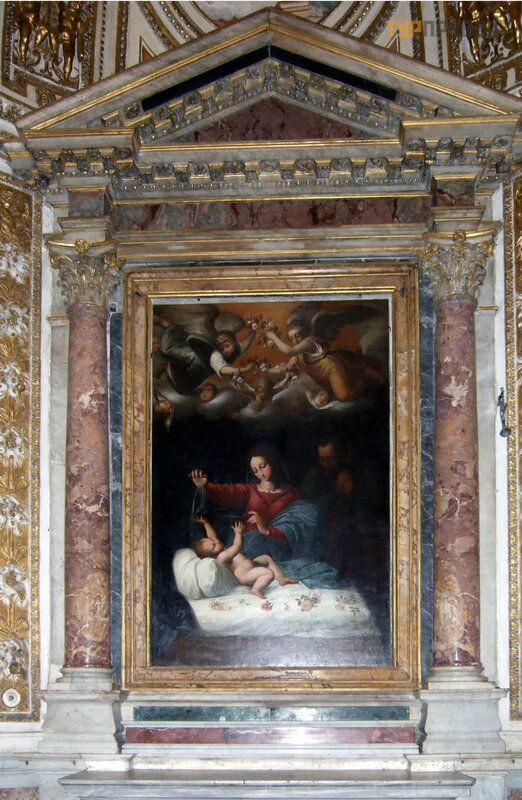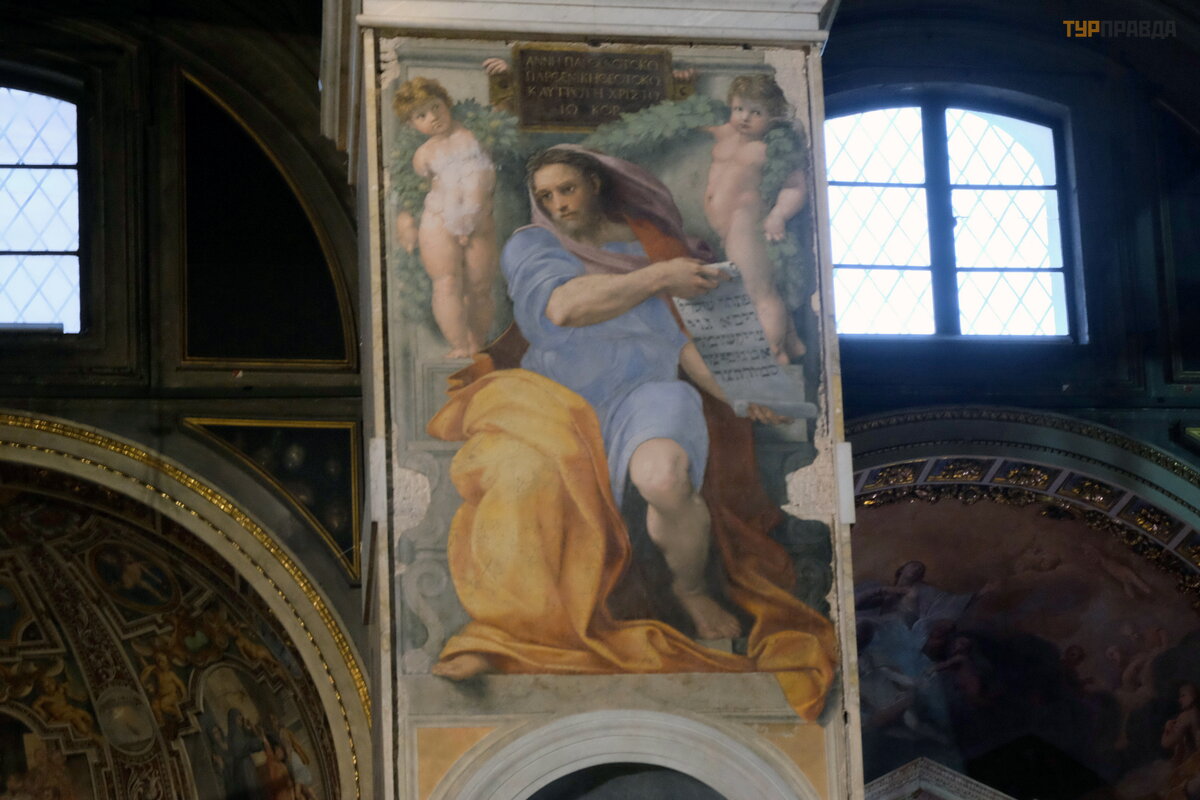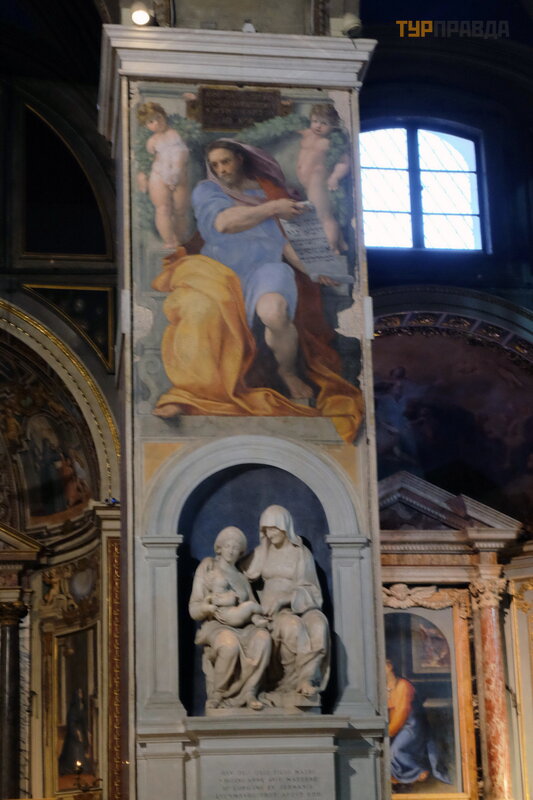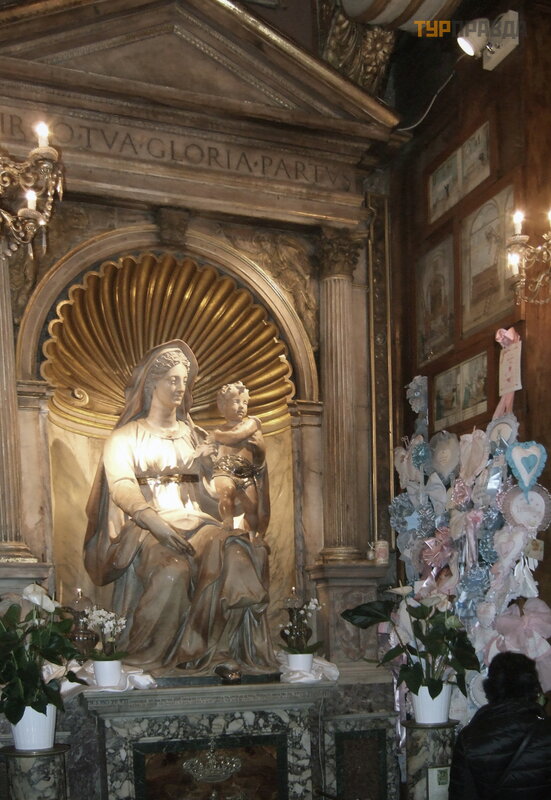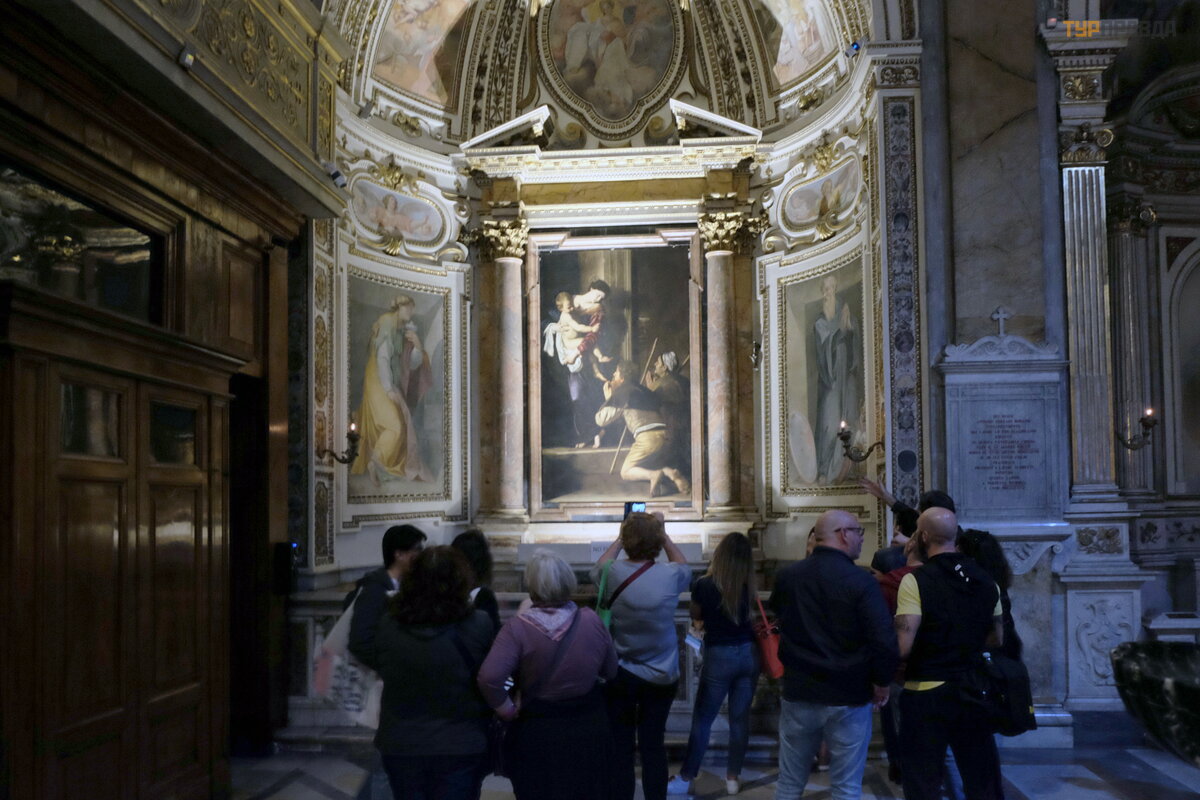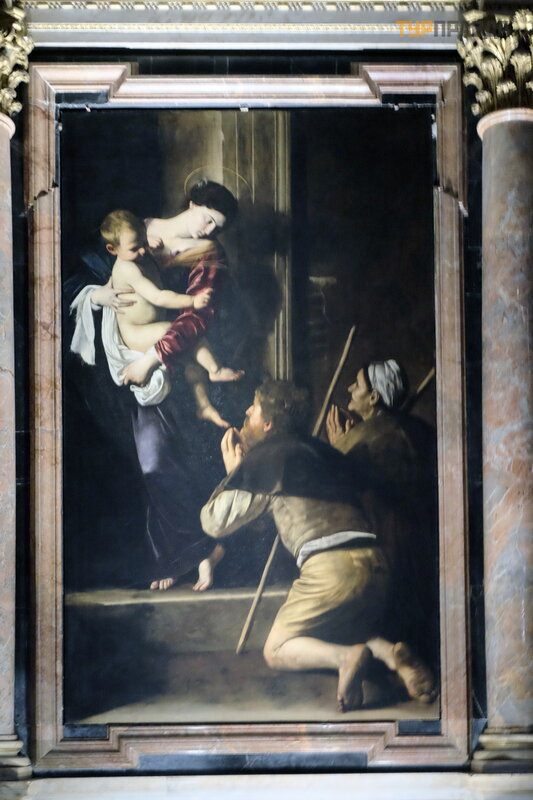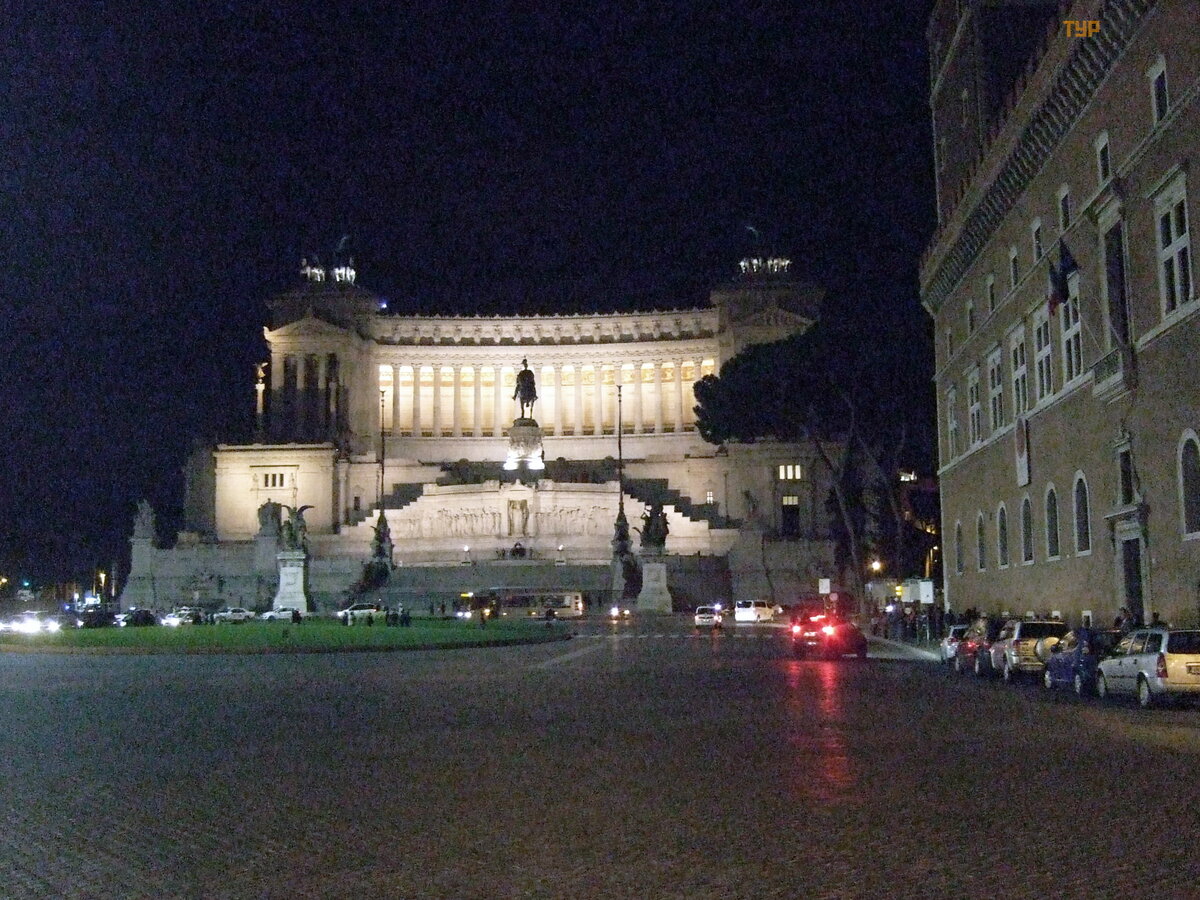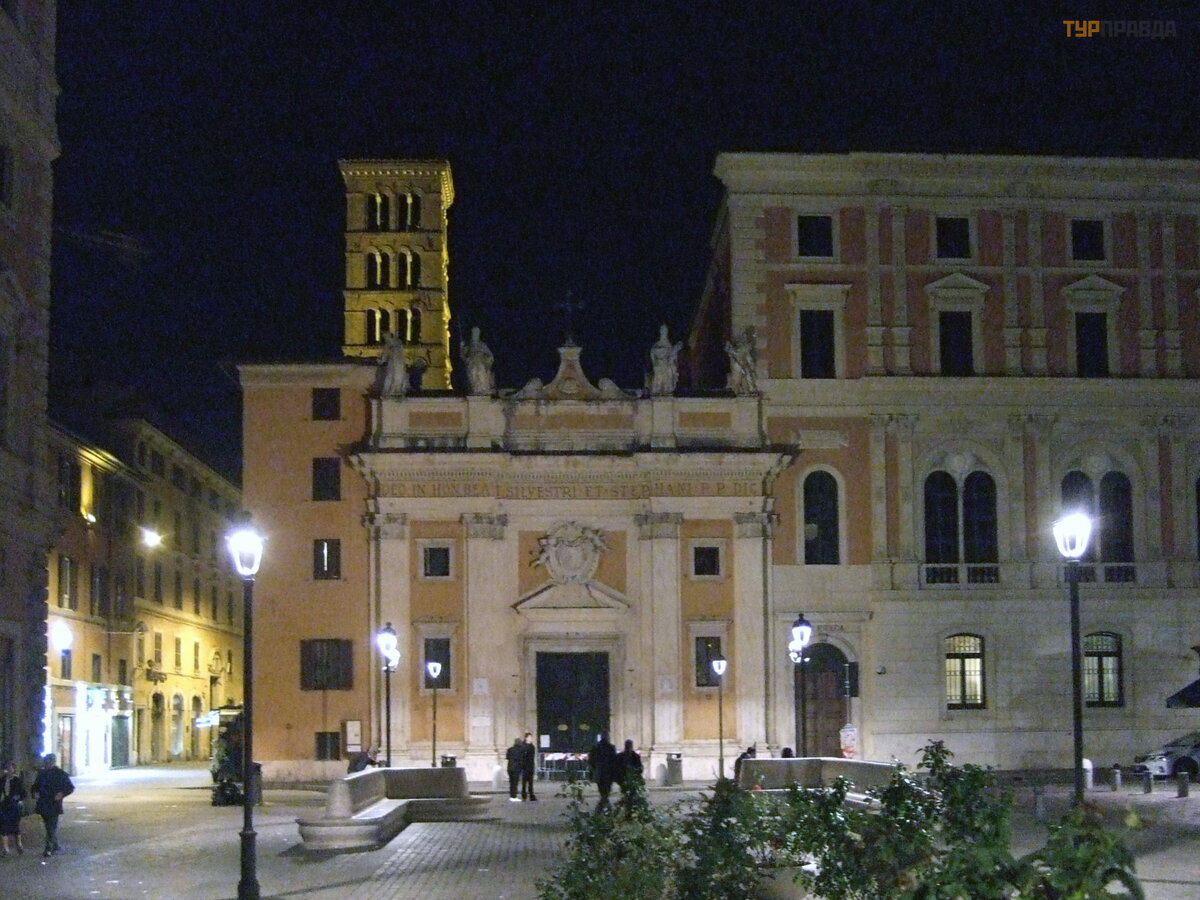Puglia, plus a bit of Rome. Part 11. Sunday walk in Rome (end)

To be continued. Start here >>>
So, we decided to look at the paintings of Caravaggio. From Piazza Navona, through a small alley, we exit to Corso Rinascimente, this is also one of the streets laid out during the years of Mussolini. The border of another district of Rome, Parione, passes along this street. The street on one side rests on Corso Vittorio Emanuel, just opposite the church of San Andrea della Valle, whose dome is visible from afar, because it is the second highest in Rome after St. Peter's.
And these guards guard the Palazzo Madama, where the Senate of Italy sits. The Palazzo was named after "Madame" Margaret of Austria, the wife of Alessandro de' Medici.
After turning the corner, we find ourselves at the church of the French diaspora in Rome, San Luigi dei Francesi (San Luigi dei Francesi) - the church of St. Louis of France.
The faç ade was designed by Giacomo della Porto.
The church is one of the most richly decorated in Rome, there are frescoes by Domenichino. Above the altar of this chapel is the painting by Guido Reni "Saint Cecilia", a copy of the painting by Rafael Sant. The vault of the Contarelli Chapel is frescoed by Cavaliere D'Arpino.
But the main treasure of the church, where all tourists aspire to, is the Contarelli Chapel with three works by the great artist Caravaggio, a kind of triptych dedicated to the Apostle Matthew ("The Calling", "Martyrdom" and "Saint Matthew and the Angel"). The chapel is quite narrow, so two paintings can be seen from an uncomfortable angle.
The Church of San Agostino, where there is another painting by Caravaggio, is also not far from Piazza Navona, but it is always closed for a siesta until 16.00, so we decided to admire the paintings of the artist in the church of Santa Maria del Poppolo.
We pass a small square of San Apollinari (Piazza di Sant'Apollinare), named after the church of the same name.
Opposite is a magnificent building with a turret - Palazzo Altemps.
Cardinal Altemps was a collector of ancient art, he placed his collection in this restored palace (1570). Now here is one of the branches of the National Museum of Rome with a large collection of sculptures.
We went to admire the beautiful courtyard:
Next to the "Monkey Tower" with the figure of the Madonna on the roof:
The story is this: in one family, a pet monkey dragged a baby to the roof of the tower. Then everything ended well, the monkey got down, now on the roof in memory of this there is a statue of the Madonna with a lamp.
Further on, our path lay in the direction of Piazza del Poppolo, we walk along the river, along the quiet street of Via Rippeta. According to documents, this street existed in the 1st century BC. e. The name of the street comes from the port of Ripetta on the Tiber, which Michelangelo mentioned in his letters.
And this is the church of the Portuguese community Sant'Antonio dei Portoghes with a beautiful facade by the architect Reinaldi, which was also closed for a siesta:
It must be said that in the Middle Ages and earlier, the Tiber River often overflowed its banks. The level of the river was higher than the modern one, and Rome rightly considered itself a port (the sea is half an hour away by train), ships moored to the berths, a lighthouse burned on the Yannicul hill.
During the time of Imperial Rome, people settled on the hills, and in the lowlands they built forums, temples, baths, stadiums, theaters. This area used to be called the Field of Mars - for military and gymnastic exercises. After the old aqueducts collapsed, residents began to settle closer to the river, despite the frequent floods.
The Fountain of the Navigators or the Fountain of Ripetta is located in the small Piazza del Porto, built in 1704 by the architect Alesandro Specci with the assistance of Carlo Fontana. Interestingly, the fountain was built from the ruins of the Colosseum arches that collapsed during the earthquake of 1703.
Cavour Bridge, built on the site of the old port of Rippetoe. Interestingly, now the Romans have a tradition - to jump from the bridge into the water on New Year's Eve.
Further to the right, the Church of San Roco al Augusteo, was built in the 16th century,
It was named after Saint Roch, the patron saint of plague patients. Facade architect Valadier 1832
Another fountain associated with the river port of Ripetta is the Barrel Fountain (Botticella). The fountain was built by an unknown author in 1774.
Under this glass pavilion, a familiar place for Italians is the Altar of Peace (Ara Pacis Augustae), created in 13 BC. e. along with the Colosseum and the Pantheon, it is one of the outstanding ancient monuments. It was built in honor of the victories of Emperor Augustus, which marked the end of the civil war. In the 16th century, the Altar was flooded by a flooded river and remained under water and a layer of mud for several centuries. The restoration of the altar began according to the plan of Mussolini, then the freezing of the soil with the help of carbon dioxide was first applied.
Fragments of the altar were removed from the swampy soil, put together and in 1938 solemnly opened to visitors.
From an artistic point of view, its main elements are marble walls with bas-reliefs.
Of course, the walls were colored, not white as they are now. The altar of peace is a quadrangular building. The entrances are on the east and west. The altar itself is located inside.
In 2006, a modern museum complex was built, the entrance fee is 10 euros. We visited it a few years ago with the Roma Pass.
On the contrary, what is now left of the mausoleum of Octavian Augustus, once reaching a height of 44 meters.
Before the Mausoleum of Hadrian (Castle of San Angelo), there were burials of the imperial families of the Julio-Claudian dynasty (Augustus, Tiberius, Agrippa, Drusus, Claudius, Nerva). With the fall of the Roman Empire, the mausoleum fell into disrepair, and in the 8th century it was plundered. In the Middle Ages, the building was turned into a fortress, which was later destroyed; in 2016, work began to restore the monument.
And this is what it looked like at the beginning of the millennium:
An Egyptian obelisk appeared in the "People's Square" Piazza del Poppolo, one of my favorite squares in Rome.
On the occasion of Sunday, people were already walking with might and main.
We set up different stages for evening performances,
but here a bummer happened to Caravaggio: a wedding was being prepared in the church of Santa Maria del Poppolo and the church was closed to the public. “But senor, kyuza, private! ”- just the minister said to us and a bunch of others who wanted to get there.
Here, we think, bad luck! Two years ago, when we were in Rome, all the paintings by Caravaggio from the churches were taken to some kind of exhibition, and now they are out of luck. They tried to ask him in "pure Italian", but it seemed that from the answer they sorted out "Aperto, domani", that is, "open tomorrow", and calmed down, decided to return the next day.
Once upon a time, all travelers who came to Rome by land came here through the city gates of Porta Flaminia. From the north, the ancient Flaminia road, laid in the 3rd century BC, approached the gate. BC e. The gate was built under the emperor Aurelian around 271-275,
repeatedly built on, rebuilt, including under the leadership of Bernini.
Three streets lead from Piazza del Poppolo to the city, we came here on the right, so we went along the central one - Via Corso.
Today, there was no car traffic along it, people were walking around.
I will not describe the sights of the street today, there are many of them, I counted seven churches alone on the street! I will write in detail in the next story about Rome.
The faç ade of Palazzo Montecitorio overlooks the square, where the Chamber of Deputies of Italy sits. In the center of the square rises the ancient Egyptian obelisk of Montecitorio.
Here's a man, great dogs made of sand!
How not to eat Roman ice cream?
Let's return back to the Piazza Navona area, to the church of Sant'Agostino (St. Augustine 1479-1483), where another painting by Caravaggio is kept.
The facade of the basilica is lined with travertine slabs. In the era of pagan Rome, these plates adorned the mighty Colosseum. However, Christian Rome willingly used materials from ancient circuses, forums and basilicas.
The main altar was designed by Bernini.
Many works of art are kept in the church.
On the left side of the nave there is a fresco of Raphael - "Prophet Isaiah". They say that Michelangelo was very offended by him, because he believed that Raphael copied his fresco in St. Peter's Cathedral.
Under the fresco of Raphael, the marble group of St. Anna and the Virgin with the Christ Child in their arms by Andrea Sansovino (1517).
Jacopo Sansovino created the sculpture Madonna del Parto (Madonna of Childbirth) (1521). These are not relatives - Jacopo, a student of Andrea Sansovino, took his last name. This miraculous Mother of God is considered the most revered of the many located in Roman churches, because pregnant women turned to her for help during childbirth.
The left leg of the sculpture was so badly worn by many touches of pious hands that they had to protect it with a silver lining.
The peculiar glory of Sant'Agostino is based on the fact that the church was especially revered by the priestesses of love. And not ordinary girls from the street, but the elite courtesans of Rome.
«I'm notorious, That I'm a brawler and a brawler? "- these lines perfectly describe Caravaggio himself. The brilliant artist, who painted his paintings cleanly, without preliminary sketches, was distinguished by a wild lifestyle. Once, in a quarrel, having killed his offender, he was sentenced to death, fled and wandered all his short life from persecution in Naples, then in Malta, then in Sicily. Ultimately, he died under unknown circumstances and it is not known where he is buried.
In the Cavaletti Chapel there is the famous painting "Madona di Loreto",
or the Madonna of Loreto, which eventually received the more famous name "Madonna of the Pilgrims" (Madonna del Pellegrini).
The picture caused a scandal because of the untidy appearance of the pilgrims and the dirty heels of one of them in the foreground, as well as because of the unusual appearance of the Madonna, shown not in heavenly radiance, but standing against the dilapidated wall of a squalid dwelling, like an ordinary woman. Moreover, the model, who acted as a model for the Madonna, was the artist's mistress, a famous Roman courtesan named Lena.
It was already early evening, it was getting dark.
Today we have traveled many kilometers around Rome and it is time to rest before the next day.
Continued here >>>
